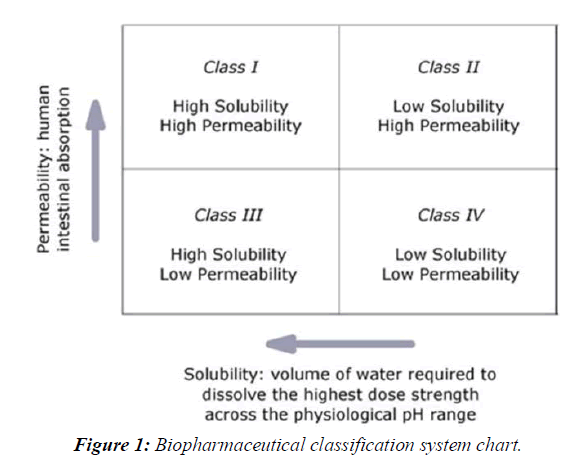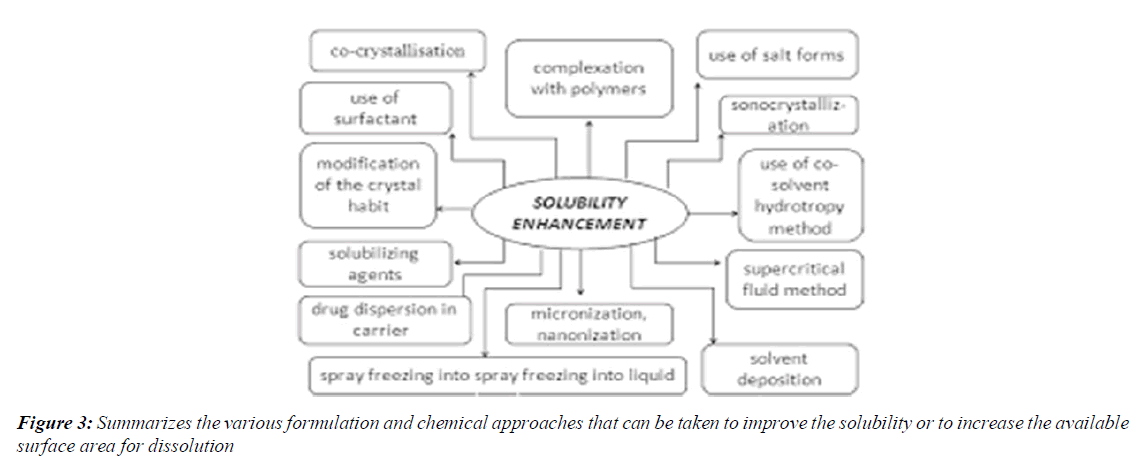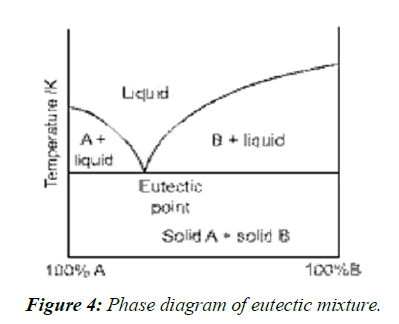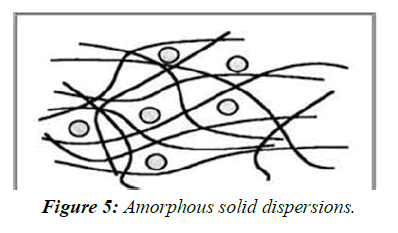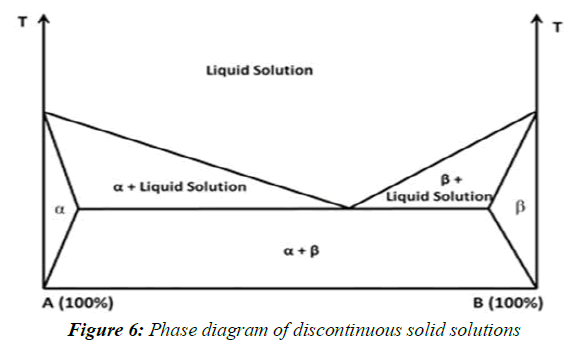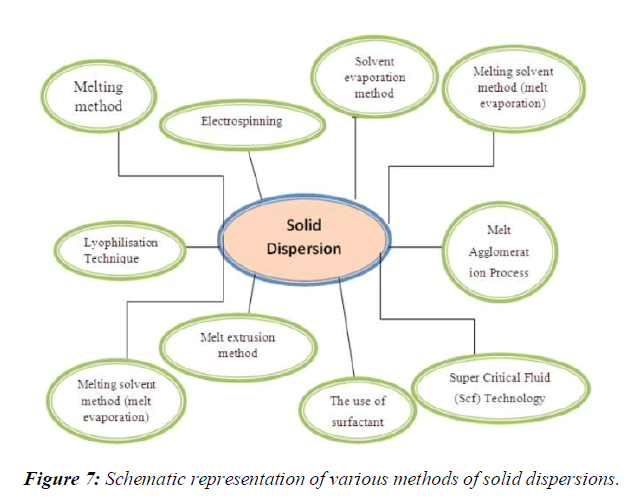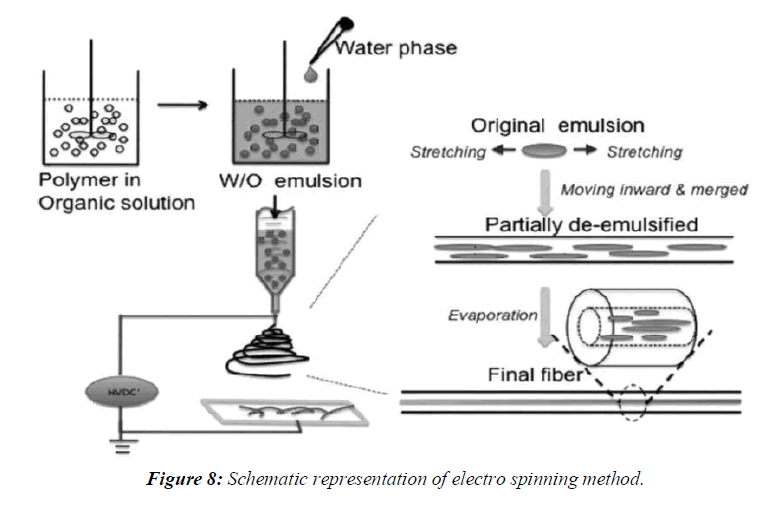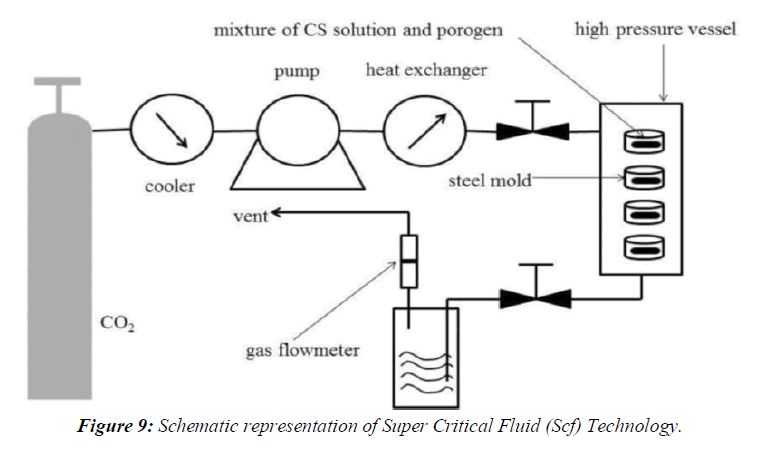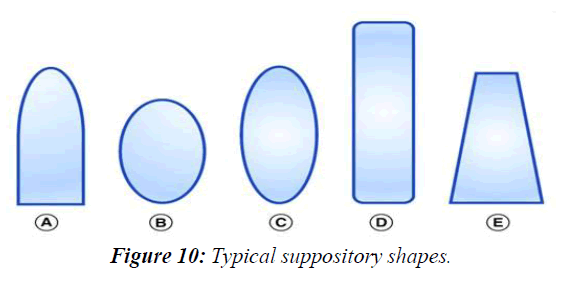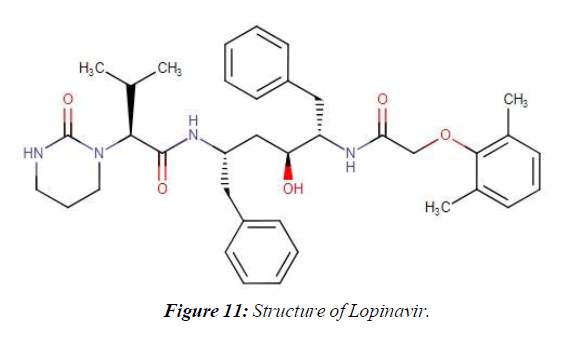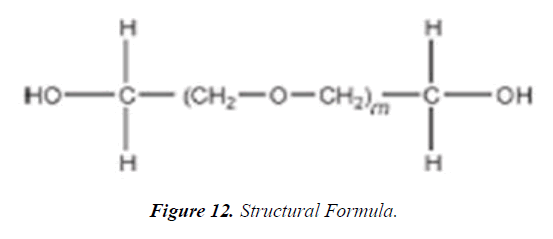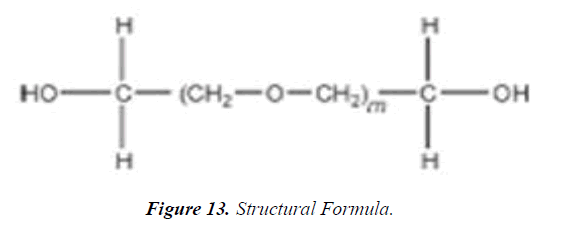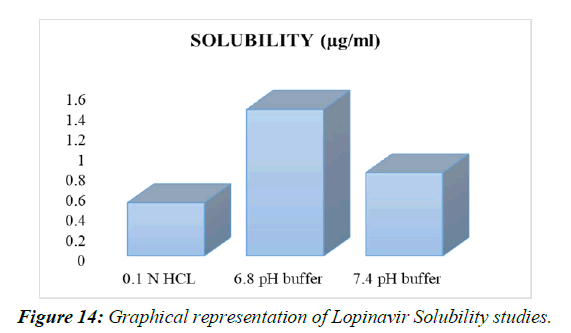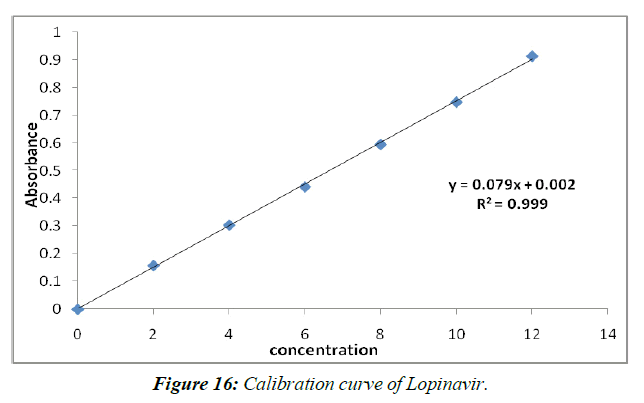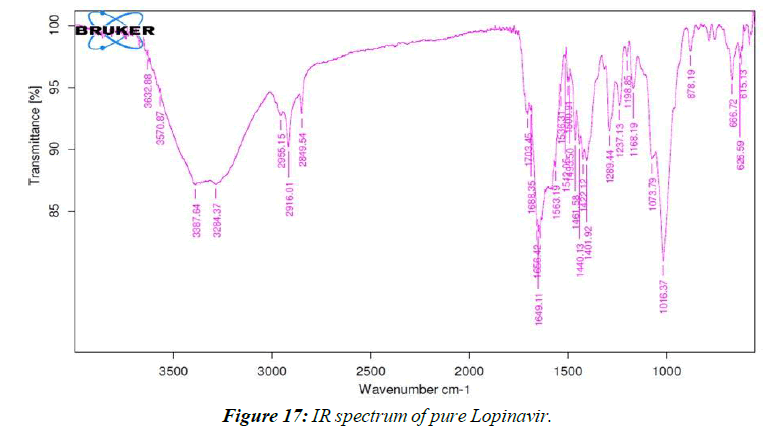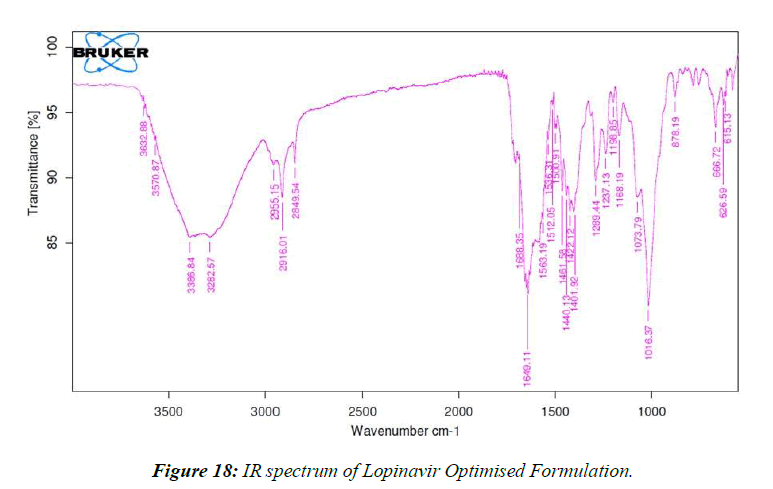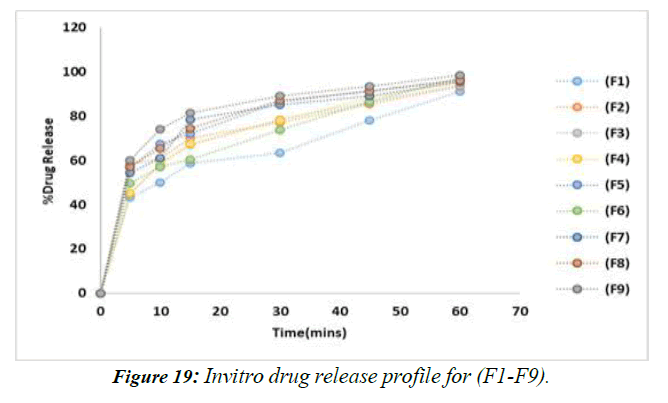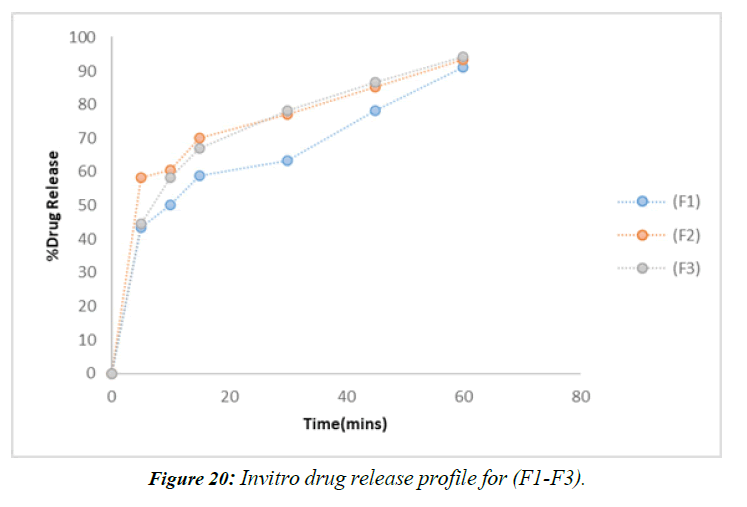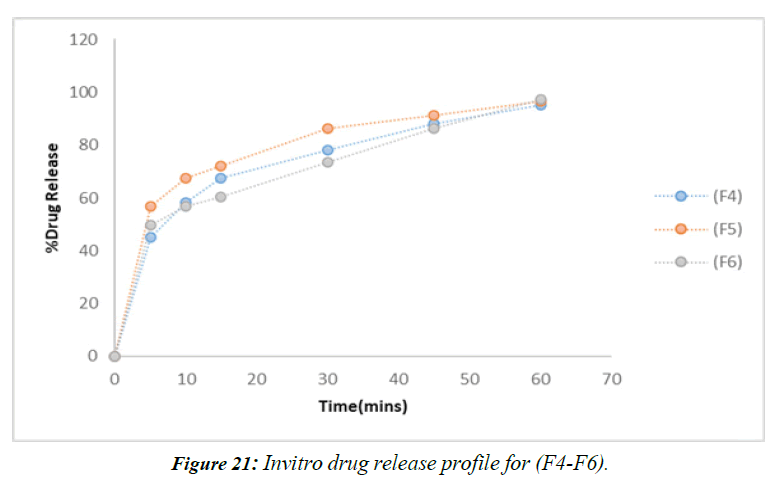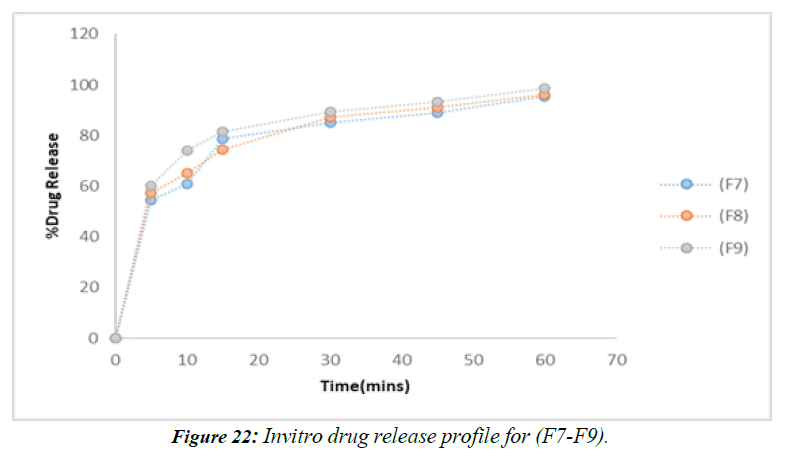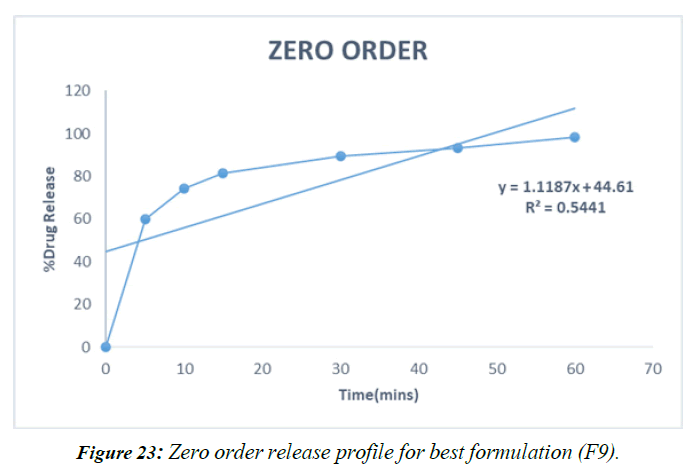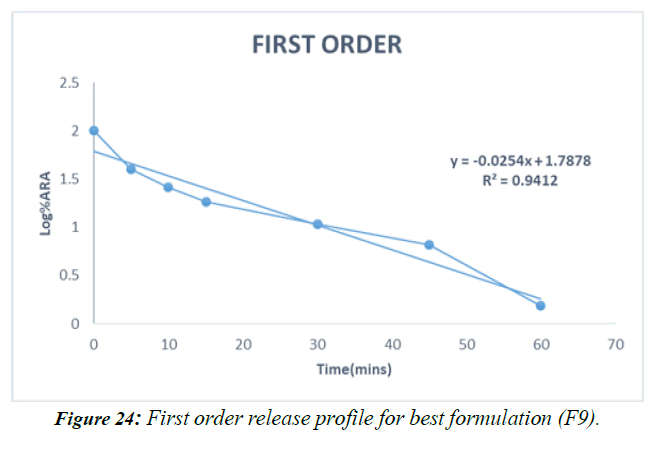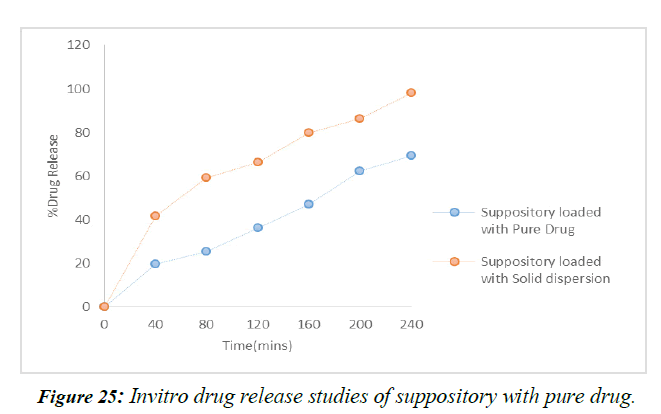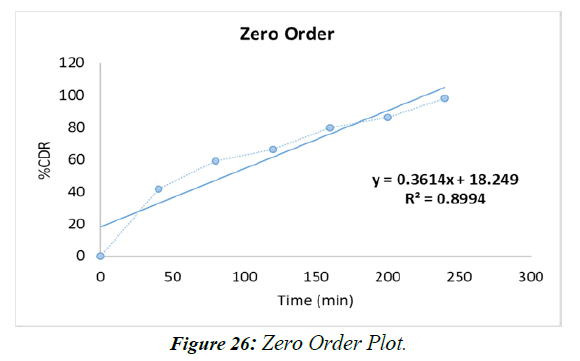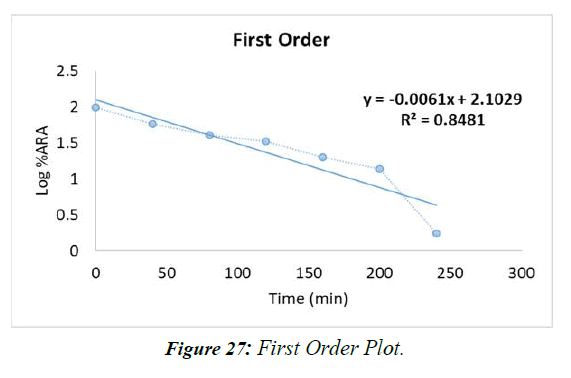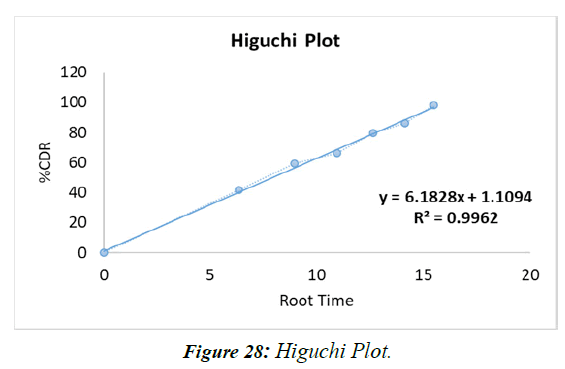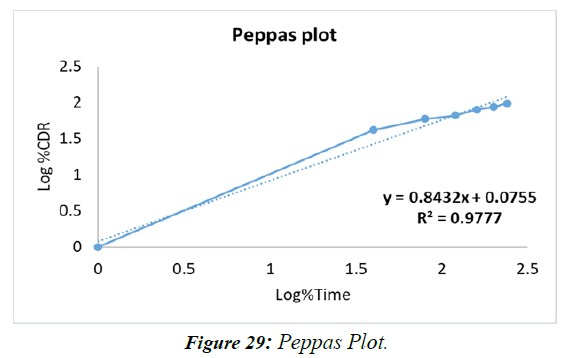Research Article - Asian Journal of Biomedical and Pharmaceutical Sciences (2024) Volume 14, Issue 103
Preparation and evaluation of suppositories by Lopinavir
Yerram Varsha1*, A.V Jithan21Department of pharmaceutics, Osmania University, Hyderabad Telangana, India
2Department of Pharmaceutical Technology, Omega College of pharmacy, Ghatkasar, India
- *Corresponding Author:
- Varsha Y
Department of pharmaceutics
Osmania University
Hyderabad Telangana, India
E-mail: yerramvarsha630@gmail.com
Received: 25-Dec-2023, Manuscript No. AABPS-23-123371; Editor assigned: 28-Dec-2023, PreQC No. AABPS-23-123371 (PQ); Reviewed: 11-Jan-2024, QC No. AABPS-23- 123371; Revised: 16-Jan-2024, Manuscript No. AABPS-23-123371(R); Published: 28-Jan-2024, DOI:10.35841/aabps-14.103.211
Citation: Varsha Y, Jithan A.V. Preparation and Evaluation of Suppositories by Lopinavir. Asian J Biomed Pharm Sci. 2024;14(103):211
Keywords
Lopinavir, Croscarmellose sodium, HPMC K100M, and HPMC K200M.
Aim and Objective
When used with ritonavir, the HIV-1 protease inhibitor lopinavir provides effective treatment for human immunodeficiency virus (HIV). Lopinavir is a BCS Class IV drug with a half-life of 6 hours.
To improve lopinavir solubility, a molding method is performed that employs the Stake 1000 and Stake 4000 base and stack starch ranges, as well as the dissolution evaporation approach employing -cyclodextrin and Croscarmellose. Made comprised the base of a suppository.
Objective
• Applying sound discretion while determining the best locations for solid-state scattering supports.
• Forlopinavir is emphasized throughout the preparation process.
• There has to be a study done comparing various pharmaceutical fillers.
• Dissolvable delivery options for broad-spectrum lopinavir efficacy: design and develop.
• Complete medical content homogeneity across a range of organized programs.
• For your improved convenience, we now offer Stake 1000 and Stake 4000 suppositories. Ingredients that do what they say they will
• Spread in vitro drug release; release energy with a decay profile.
Introduction
Oral bioavailability of a drug depends on its solubility and/or dissolution rate, and dissolution may be the rate determining step for the onset of therapeutic activity. Therefore efforts to increase drug dissolution of drug are often needed. Methods available to improve dissolution include salt formation, micronization and addition of solvent or surface active agents. Solid Dispersion (SD) is one of such methods and it involves a dispersion of one or more active ingredients in an inner carrier or matrix in solid state prepared by melting, dissolution in solvent or melting solvent method [1,2].
The enhancements of oral bioavailability of such poorly water-soluble drugs often show poor bioavailability because of low and erratic levels of absorption. Drugs that undergo dissolution rate limited gastrointestinal absorption generally show improved dissolution and bio availability as a result of reduction in particle size. However, micronizing of drugs often leads to aggregation and agglomeration of particles, which results in poor wettability [3, 4]. Solid dispersions of poorly water-soluble drugs with water-soluble carriers have been reduced the incidence of these problems and enhanced dissolution. The development of solid dispersions as a practically viable method to enhance bioavailability of poorly water-soluble drugs overcame the limitations of previous approaches such as salt formation, Solubilization by co-solvents, and particle size reduction. Studies revealed that drugs in solid dispersion need not necessarily exist in the micronized state [5,6]. A fraction of the drug might molecularly disperse in the matrix, thereby forming a solid dispersion. When the solid dispersion is exposed to aqueous media, the carrier dissolves and the drug releases as fine colloidal particles, (Figure 1).
Schematic representation of bioavailability enhancement of poorly water soluble drug
Oral bioavailability of a drug depends on its solubility and/or dissolution rate, and dissolution may be the rate determining step for the onset of therapeutic activity. Therefore efforts to increase drug dissolution of drug are often needed [7-9]. Methods available to improve dissolution include salt formation, micronization and addition of solvent or surface active agents. Solid dispersion (SD) is one of such methods and it involves a dispersion of one or more active ingredients in an inner carrier or matrix in solid state prepared by melting, dissolution in solvent or melting-solvent method. The technique has been used for a wide variety of poorly aqueous soluble drug. Poorly soluble drugs represent a problem for their scarce availability related to their low dissolution rate. The major drawback of low aqueous solubility is delays its absorption from the gastrointestinal tract. Solubility behavior of a drug is one of the key determinants of its oral bioavailability [10]. Noyesh-Whitney equation provides some hints as to how the dissolution rate of even very poorly soluble compounds might be improved to minimize the limitations to oral Availability, (Figure 2).

Where,
dC/dt - is the rate of dissolution,
A -is the surface area available for dissolution,
D - is the diffusion coefficient of the compound,
Cs- is the solubility of the compound in the dissolution medium,
C -is the concentration of drug in the medium at time t and
h - is the thickness of the diffusion boundary layer adjacent to the surface of the dissolving compound.
To increase the dissolution rate from equation the following approaches are available.
➢ To increases the surface area available for dissolution Decreasing the particle size of drug.
➢ Optimizing the wetting characteristics of compound surface.
➢ To decrease the boundary layer thickness.
➢ Ensure sink condition for dissolution.
➢ Improve apparent solubility of drug under physiologically relevant conditions.
➢ Drug administered in fed state is a way to improve the dissolution rate.
Of these possibilities, changes in the hydrodynamics are difficult to invoke in-vivo and the maintenance of sink conditions will depend on how permeable the gastrointestinal mucosa is to the compound as well ason the composition and volume of the luminal Fluids [11,12]. Although some research effort has been directed towards permeability enhancement using appropriate excipients, results to date have not been particularly encouraging. Administration of the drug in the fed state may be an option to improve the dissolution rate and also to increase the time available for dissolution; the likely magnitude of the food effect can be forecasted from dissolution tests in bio relevant media.
Summarizes the various formulation and chemical approaches that can be taken to improve the solubility or to increase the available surface area for dissolution
The dissolution of a drug from its solid oral dosage forms depends upon its release from the dosage form and its subsequent mixing into physiological fluids. It has been estimated that nearly 35-40% of the drugs suffer from poor aqueous solubility, thereby affecting their absorption from the gastrointestinal tract, which leads to poor oral bioavailability, high intra- and inter-subject variability, increase in dose, reduction in therapeutic efficiency and finally failure in formulation development [13-15]. The development of solid dosage forms for water-insoluble drugs has been a major challenge for pharmaceutical scientists for decades [16]. Various formulation strategies such as micronisation, micellar solubilization, complexation, dendrimers for drug solubilization, formation of solid solutions or dispersions with hydrophilic carriers, self-microemulsifying drug delivery systems, spray drying, nano approaches, pro-drug approaches and salt synthesis have been developed to increase the dissolution rate of water-insoluble drugs [17-19]. An attractive possibility is employing a simple solid dispersion technique making use of various hydrophilic carriers. Solid Dispersions (SDs) are defined as the dispersion of one or more active ingredients in an inert hydrophilic carrier or matrix in a solid state, and are prepared by the fusion, solvent or solvent-fusion method. This technique enables reducing particle size to a nearly molecular level, offers a variety of processing and excipient options that allow for flexibility when formulating oral delivery systems of poor water-soluble drugs that are cost-effective and significantly reduced in dosage [20-23]. It has been widely demonstrated that a hydrophilic carrier dissolves rapidly, exposing the drug particles to the dissolution medium as fine particles facilitating quick dissolution and absorption8. The mechanisms for increased dissolution rate may include reduction of crystallite size, solubilization effect of the carrier, absence of aggregation of drug crystallites, improved wettability and dispersability of a drug from the dispersion, dissolution of the drug in the hydrophilic carrier or conversion of the drug to an amorphous state [24,25]. Schizophrenia is a severe non-curable illness of the brain with serious consequences if not properly treated and kept under control. It is the most common form of severe mental illness, (Figure 3).
Solid dispersions
Solid Dispersions (SDs) traditionally have been used as an effective method to improve the dissolution properties and bioavailability of poorly water-soluble drugs. Since 1961, many investigators have studied SDs of poorly water- soluble drugs with various pharmacologically inert carriers to increase the dissolution and oral absorption of poorly water-soluble drug show ever, only a few systems are useful commercially [26].
Fast or immediate drug dissolution from solid dispersions has been observed due to increased wettability, improved dispersibility of drug particles, existence of the drug in amorphous form with improved solubility and absence of aggregation of drug particles .Literature shows that the solvent evaporation method has been used for the preparation of solid dispersions for dissolution enhancement .Earlier studies show that solid dispersion systems increased the drug dissolution due to improved solubility, wettability and dispersibility using hydrophilic carriers In the present work, physical mixtures, co-grinding and co-precipitation or solvent evaporation method was used to prepare solid dispersions of prednisolone [27-31]. This method requires the minimal amount of solvent in dissolving the drug. We used various polymeric carriers in this study. Polyvinylpyrrolidone (PVP) and Poly Ethylene Glycol (PEG) were chosen as water-soluble polymers.
Classification of solid dispersion
Based on their molecular arrangement, six different types of solid dispersions can be distinguished. (Table 1) Moreover, in various studies the designation of solid dispersions is based on the method of preparation [32]. However, since different preparation methods can result in the same subtypes or similar preparation methods can result in different subtypes, it can be argued that solid dispersions should preferably be designated according to their molecular arrangement. Moreover, not the preparation method but the molecular arrangement governs the properties of solid dispersions. Therefore, it is essential to use terms that indicate the molecular arrangement in the solid dispersion. Knowledge about the molecular arrangement will enlarge comprehension of the properties and behavior of solid dispersions. Furthermore, it will facilitate optimization of their properties required for a specific application [33-35]. For example, the mechanism underpinning the dissolution of solid dispersions is poorly understood. Many case studies showed accelerated dissolution of hydrophobic compounds using solid dispersions but mechanisms are rarely discussed. The most important reason for that is the lacking knowledge about the mode of incorporation of the hydrophobic drug in the matrix, despite numerous efforts to clarify this. A question like, “is the drug present as a crystalline phase or as amorphous nano-particles or molecularly dispersed throughout the matrix” is rarely discussed [36-38]. All three situations result in different drug concentrations at the dissolving interface. Still it has not been fully elucidated how this affects dissolution behaviour of solid dispersions. Secondly, the physical and chemical stability of the matrix or the incorporated drug depends on the mode of incorporation. If drug molecules, for example, are present in amorphous nano-particles, crystallization requires only rotational rearrangement. On the other hand, for a molecularly dispersed drug, translational diffusion is necessary before crystallization can occur by rotational rearrangements [39,40].
| S. No. | Properties | Value |
|---|---|---|
| 1 | Density (Bulk) | 0.529 g/cm3 |
| 2 | Density (Tapped) | 0.819 g/cm3 |
| 3 | Density (True) | 1.543 g/cm3 |
| 4 | Solubility | Insoluble in water but rapidly swells up to 4-8 times its original volume and also insoluble acetone, ethanol and toluene |
Table 1. Typical Properties of Croscarmellose Sodium.
Eutectic mixtures
A simple eutectic mixture consists of two compounds which are completely miscible in the liquid state but only to a very limited extent in the solid state. It is prepared by rapid solidification of fused melt of two components that show complete liquid miscibility but negligible solid-solid solution, (Figure 4, Figure 5).
Solid solution
Solid solutions are comparable to liquid solutions, consisting of just one phase irrespective of the number of components. In the case of solid solutions, the drug's particle size has been reduced to its absolute minimum viz. the molecular dimensions and the dissolution rate is determined by the dissolution rate of the carrier. Classified according to their miscibility (continuous versus discontinuous solid solutions) or second, according to the way in which the solvate molecules are distributed in the solvendum (substitutional, interstitial or amorphous).
Continuous solid solutions
In a continuous solid solution, the components are miscible in all proportions. Theoretically, this means that the bonding strength between the two components is stronger than the bonding strength between the molecules of each of the individual components. Solid solutions of this type have not been reported in the pharmaceutical world till date.
Discontinuous solid solutions
In the case of discontinuous solid solutions, the solubility of each of the components in the other component is limited. Due to practical considerations it has been suggested by Goldberg et al. That the term `solid solution' should only be applied when the mutual solubility of the two components exceeds 5% (Figure 6).
Subsitutional solid dispersions
Substitution is only possible when the size of the solute molecules differs by less than 15% or so from that of the solvent molecules. Classical solid solutions have crystalline structure, in which the solute molecules can either substitute for solvent molecules in the crystal lattice or fit into the intrsticies between the solvent molecules.
Interstitial solid solutions
In interstitial solid solutions, the dissolved molecules occupy the interstitial spaces between the solvent molecules in the crystal lattice. Solute molecule diameter should be less than 0.59 times than that of solvent molecular diameter.
Glass solution and suspensions
Glass solutions are homogeneous glassy system in which solute dissolves in glass carrier. Glass suspensions are mixture in which precipitated particles are suspended in glass solvent. Lattice energy is much lower in glass solution and suspension.
Methods of preparation of solid dispersions
Various methods used for preparation of solid dispersion system. These methods are given bellow.
1 kneading method
2 Solvent evaporation methods
3 Melting solvent method (melt evaporation)
4 Melt extrusion methods
5 Lyophilization techniques
6 Melt agglomerations Process
7 The use of surfactant
8 Electro spinning
9 Super Critical Fluid (Scf) technology, (Figure 7)
Kneading method
In the kneading method Solid dispersions were prepared by weighed quantities of drug and polymers were placed in a mortar and then the mixtures were kneaded with small volume water for 30 min to produce a homogeneous dispersion. Once homogeneous slurry was obtained, samples where dried in oven at 450C until dryness. The dispersions after drying were pulverized using a glass mortar and pestle. The pulverized mass was then sifted through a #60 sieve to obtain a uniform particle size and stored in a desiccator at room temperature until further use.
Solvent evaporation method
In this method, the physical mixture of the drug and carrier is dissolved in a common solvent, which is evaporated until a clear, solvent free film is left. The film is further dried to constant weight. The main advantage of the solvent method is thermal decomposition of drugs or carriers can be prevented because of the relatively low temperatures required for the evaporation of organic solvents. However, some disadvantages are associated with this method such as
1) The higher cost of preparation.
2) The difficulty in completely removing liquid solvent.
3) The possible adverse effect of traces of the solvent on the chemical stability
4) The selection of a common volatile solvent.
5) The difficulty of reproducing crystal form.
6) In addition, a super saturation of the solute in the solid system cannot be attained except in a System showing highly viscous properties.
Melting solvent method (melt evaporation)
It involves preparation of solid dispersions by dissolving the drug in a suitable liquid solvent and then incorporating the solution directly into the melt of polyethylene glycol, which is then evaporated until a clear, solvent free film is left. The film is further dried to constant weight. The 5 –10% (w/w) of liquid compounds can be incorporated into polyethylene glycol 6000 without significant loss of its solid property. It is possible that the selected solvent or dissolved drug may not be miscible with the melt of the polyethylene glycol. Also the liquid solvent used may affect the polymorphic form of the drug, which precipitates as the solid dispersion. This technique possesses unique advantages of both the fusion and solvent evaporation methods. From a practical standpoint, it is only limited to drugs with a low therapeutic dose e.g. below 50 mg.
Melt extrusion method
The drug/carrier mix is typically processed with a twin-screw extruder. The drug/carrier mix is simultaneously melted, homogenized and then extruded and shaped as tablets, granules, pellets, sheets, sticks or powder. The intermediates can then be further processed into conventional tablets. An important advantage of the hot melt extrusion method is that the drug/carrier mix is only subjected to an elevated temperature for about 1 min, which enables drugs that are somewhat thermo labile to be processed. Solid dispersion by this method is composed of active ingredient and carrier, and prepare by hot-stage extrusion using a co-rotating twin-screw extruder. The concentration of drug in the dispersions is always 40% (w/w). The screw-configuration consist of two mixing zones and three transport zones distribute over the entire barrel length, the feeding rate is fix at 1 kg/h and the screw rate is set at 300 rpm. The five temperature zones are set at 100, 130, 170, 180, and 185C from feeder to die. The extrudes are collect after cooling at ambient temperature on a conveyer belt. Samples are milled for 1 min with a laboratory cutting mill and sieve to exclude particles >355μm.
Lyophilization Technique
Lyophilization involves transfer of heat and mass to and from the product under preparation. This technique was proposed as an alternative technique to solvent evaporation. Lyophilization has been thought of a molecular mixing technique where the drug and carrier are co dissolved in a common solvent, frozen and sublimed to obtain a lyophilized molecular dispersion.
Melt Agglomeration Process
This technique has been used to prepare solid dispersion wherein the binder acts as a carrier. In addition, solid dispersion are prepared either by heating binder, drug and excipient to a temperature above the melting point of the binder (melt- in procedure) or by spraying a dispersion of drug in molten binder on the heated excipient (spray-on procedure) by using a high shear mixer. The rotary processor might be preferable to the high melt agglomeration because it is easier to control the temperature and because a higher binder content can be incorporated in the agglomerates. The effect of binder type, method of manufacturing and particle size are critical parameters in preparation of solid dispersion by melt agglomeration. It has been found that the melt in procedure gives a higher dissolution rates than the spray-on procedure with PEG 3000, poloxamer 188 and gelucire 50/13 attributed to immersion mechanism of agglomerate formation and growth. In addition the melt in procedure also results in homogeneous distribution of drug in agglomerate. Larger particles results in densification of agglomerates while fine particle cause complete adhesion to the mass to bowl shortly after melting attributed to distribution and coalescence of the fine particles.
Melt Agglomeration Process by The use of surfactants
The utility of the surfactant systems in Solubilization is very important. Adsorption of surfactant on solid surface can modify their hydrophobicity, surface charge, and other key properties that govern interfacial processes such as flocculation/dispersion, floatation, wetting, Solubilization, detergency, and enhanced oil recovery and corrosion inhibition. Surfactants have also been reported to cause solvation/plasticization, manifesting in reduction of melting the active pharmaceutical ingredients, glass transition temperature and the combined glass transition temperature of solid dispersions. Because of these unique properties, surfactants have attracted the attention of investigators for preparation of solid dispersions.
Electro spinning
Electro spinning is a process in which solid fibers are produced from a polymeric fluid stream solution or melt delivered through a millimeter-scale nozzle. This process involves the application of a strong electrostatic field over a conductive capillary attaching to a reservoir containing a polymer solution or melt and conductive collection screen. Upon increasing the electrostatic field strength up to but not exceeding critical value, charge species accumulated on the surface of a pendant drop destabilize the hemispherical shape into a conical shape (commonly known as Taylor’s cone). Beyond the critical value, a charged polymer jet is ejected from the apex of the cone (as a way of relieving the charge built-up on the surface of the pendant drop). The ejected charged jet is then carried to the collection screen via the electrostatic force. The Columbic repulsion force is responsible for the thinning of the charged jet during its trajectory to the collection screen. The thinning down of the charged jets limited if the viscosity increases, the charged jet is dried. This technique has tremendous potential for the preparation of nano fibres and controlling the release of biomedicine, as it is simplest, the cheapest this technique can be utilized for the preparation of solid dispersions in future, (Figure 8).
Super Critical Fluid (SCF) Technology
The supercritical fluid ant solvent techniques, carbon dioxide are used as an ant solvent for the solute but as solvent with respect to the organic solvent. Different acronyms were used by various authors to denotemicronization processes: aerosol solvent extraction system, precipitation with a compressed fluidantisolvent, gas anti-solvent, solution enhanced dispersion by supercritical fluids, and supercritical antisolvent.The SAS process involves the spraying of the solution composed of the solute and of the organic solvent into a continuous supercritical phase flowing concurrently. Use of supercritical carbon dioxide is advantageous as it is much easier to remove from the polymeric materials when the process is complete, even though a small amount of carbon dioxide remains trapped inside the polymer; it poses no danger to the patient. In addition the ability of carbon dioxide to plasticize and swell polymers can also be exploited and the process can be carried out near room temperature. Moreover, supercritical fluids are used to lower the temperature of melt dispersion process by reducing the melting temperature of dispersed active agent. The reason for this depression is the solubility of the lighter component (dense gas) in the forming phase (heavier component), (Figure 9).
Advantages of solid dispersion
Particles with Reduced Particle Size
Molecular dispersions, as solid dispersions, represent the last state on particle size reduction, and after carrier dissolution the drug is molecularly dispersed in the dissolution medium. Solid dispersions apply this principle to drug release by creating a mixture of a poorly water soluble drug and highly soluble carriers. A high surface area is formed, resulting in an increased dissolution rate and, consequently, improved bioavailability.
Particles with Improved Wettability
Carriers with surface activity, such as cholic acid and bile salts. When used, can significantly \increase the wettability property of drug. Even carriers without any surface activity, such as urea, improved drug wettability. Carriers can influence the drug dissolution profile by direct dissolution or co-solvent effects.
Particles with Higher Porosity
Particles in solid dispersions have been found to have a higher degree of porosity. The increase in porosity also depends on the carrier properties; for instance, solid dispersions containing linear polymers produce larger and more porous particles than those containing reticular polymers and, therefore, result in a higher dissolution rate. The increased porosity of solid dispersion particles also hastens the drug release profile.
Rapid disintegration of oral tablets
Drug is formulated with hydrophilic carrier (e.g. PEG) as a solid dispersion to increase its aqueous solubility and dissolution. Then superdisintegrant (e.g. croscarmellose sodium) is used in tablet formulation to achieve rapid disintegration of tablets prepared by wet granulation method. These rapidly disintegrating tablets can be used as an alternative to parenteral therapy enabling patient for self-medication even without the aid of water.
As a formulation vehicle
Solid dispersions can be used as formulation vehicle to facilitate the preclinical safety and early clinical studies on new chemical entities with very low aqueous solubility. It provides a means to rapidly assess the safety and efficacy profile of the drug substance that may be otherwise difficult to obtain.
Disadvantages of solid dispersions
The major disadvantages of solid dispersion are related to their instability. Several systems have shown changes in crystallinity and a decrease in dissolution rate with aging. The crystallization of ritonavir from the supersaturated solution in a solid dispersion system was responsible for the withdrawal of the ritonavir capsule (Norvir, Abboft) from the market.
Moisture and temperature have more of a deteriorating effect on solid dispersions than on physical mixtures. Some solid dispersion may not lend them to easy handling because of tackiness.They are not broadly used in commercial products because there is the possibility that during processing (mechanical stress) or storage (temperature and humidity stress) the amorphous state may undergo crystallization.
The effect of moisture on the storage stability of amorphous pharmaceuticals is also a significant concern, because it may increase drug mobility and promote drug crystallization.
Most of the polymers used in solid dispersions can absorb moisture, which may result in phase separation, crystal growth or conversion from the amorphous to the crystalline state or from a metastable crystalline form to a more stable structure during storage. This may result in decreased solubility and dissolution rate. Therefore, exploitation of the full potential of amorphous solids requires their stabilization in solid state, as well as during in vivo performance.
• Poor scale-up for the purposes of manufacturing.
• Laborious and expensive methods of preparation.
• Reproducibility of physicochemical characteristics.
• Difficulty in incorporating into formulation of dosage forms.
• Scale-up of manufacturing process.
• Stability of the drug and vehicle.
Applications of Solid Dispersions
Solid dispersion systems can provide numerous additional benefits; some of them are as follows
In improving immunosuppressive therapy in lung transplant patients, dry powder formulation consisting of a solid dispersion (e.g. Cyclosporine A) for inhalation is prepared. It can avoid many problems like use of local anaesthesia and irritating solvents, Solid dispersion formulations were demonstrated to accelerate the onset of action for drugs such as nonsteroidal antiinflammatory drugs (NSAIDS) where immediacy of action is crucial in relieving acute pain and inflammation.Solid dispersion systems were shown to provide bio available oral dosage forms for anti-cancer drugs, which could be substituted for standard injections to improve patient comfort and compliance. Solid dispersion systems were also found to reduce food effect on drug absorption, thus increasing the convenience of drug therapy as the need for some drugs to be taken with food was eliminated. Solid dispersion- based dosage form allowed for greater drug loading per dose and improved stability over a soft gelatin capsule formulation which thereby improved the convenience of drug therapy by reducing the dosing regime and eliminating the need for refrigerated storage. Improved absorption efficiency demonstrated for solid dispersion systems allows for a reduction in the content of active agent per dose, thus decreasing the cost associated with these drug therapies [40-43].
It also act as a functional carriers that offer the added benefit of targeting the release of highly soluble forms of poorly water soluble drugs to an optimum site for absorption. These benefits demonstrate the current contributions and future potential of solid dispersion systems toward improving drug therapies for a variety of important medical conditions whose treatment involves poorly water soluble drugs.
• To obtain a homogeneous distribution of a small amount of drug in solid state.
• To stabilize the unstable drug.
• To dispense liquid (up to 10%) or gaseous compounds in a solid dosage.
• To formulate a fast release primary dose in a sustained released dosage form.
• To formulate sustained release regimen of soluble drugs by using poorly soluble or insoluble carriers.
• To reduce pre systemic inactivation of drugs like morphine and progesterone.
• Polymorphs in a given system can be converted into isomorphous, solid solution, eutectic or molecular addition compounds.
• To increase the solubility of poorly soluble drugs thereby enhance the dissolution rate, absorption and bioavailability.
• To obtain a homogeneous distribution of a small amount of drug in solid state.
• To stabilize unstable drugs and protect against decomposition by processes such as hydrolysis, oxidation, racemization, photo oxidation etc.
• To dispense liquid or gaseous compounds;
• To formulate a fast release priming dose in a sustained release dosage form;
• To formulate sustained release preparation of soluble drugs by dispersing the drug in poorly soluble or insoluble carrier;
• To reduce side effects-(a) the binding ability of drugs for example to the erythrocyte membrane is decreased by making its inclusion complex, (b) the damage to the stomach mucous membranes by certain non-steroidal anti-inflammatory drugs can be reduced by administration as an inclusion compound;
• To mask unpleasant taste and smell and avoid undesirable incompatibilities.
• To convert liquid compounds into formulations. Liquid drugs can be manufactured as solid drug formulations such as powders, capsules or tablets e.g., unsaturated fatty acids, essential oils, nitroglycerin, benzaldehyde, prostaglandin, clofibrate etc.
• To reduce pre systemic inactivation of drugs like morphine and progesterone
Limitations
The limitations of this technology have been a drawback for the commercialization of solid dispersions. The limitations include
• Laborious and expensive methods of preparation,
• Reproducibility of physicochemical characteristics,
• Difficulty in incorporating into formulation of dosage forms,
• Scale-up of manufacturing process, and
• Stability of the drug and vehicle.
Suppositories
Suppositories are a dosage form designed to deliver drugs through rectal and vaginal routes of administration. They evolved as a more convenient alternative form of drug delivery from liquid enema formulations. In fact, the term suppositories come from the Latin word supponere, meaning ‘substitute’ [44]. While commonly perceived to be for rectal administration only, suppositories are also appropriate for vaginal administration. Pessaries are often used to describe vaginal suppositories. The Latin term pessarium derived from the Greek word pesos, which means ‘oval stone’ was used to describe the shape.
Suppositories and pessaries as drug delivery vehicles are not new dosage forms. Rectal drug delivery is one of the world's oldest strategies for drug dosing and rectally applied products have existed for hundreds of years. Suppositories have been referenced in the Hebrew Scriptures. Even vaginally applied pessaries are equally as old with documentation reported in Egyptian papyruses. Hippocrates wrote of various acorn-based medicines delivered rectally and vaginally for local pharmacologic effects [45].
Initially, rectal suppositories were composed of bases of baked honey, soap, tallow or horn impregnated with medicinal substances. In the late 18th century, cocoa butter was substituted as the primary base. The first record of the inclusion of an active pharmaceutical ingredient (API) in a suppository was in 1841 with the introduction of opium to cocoa butter. Suppositories during this time were approximately 5 g in size. In 1897, a combination of gelatin, glycerin and water was utilized for the first time. Fatty bases (triglycerides) were introduced as suppository bases during World War II due to shortages in cocoa butter. Following World War II, most commercial suppositories continued to be comprised of these hard fats as their primary bases. Also, during this time, the size of the suppositories was reduced to ∼2 g. Today, suppositories on the commercial market continue to adhere to these general product characteristics. The large majority of suppositories on the market are utilized for topical relief (paracetamol and caffeine 46) or for incontinence (bisacodyl, lactulose and glycerin 46). However, the US FDA lists several other drug products which are approved for rectal administration to treat ulcerative colitis (mesalamine, hydrocortisone) 46 and as an antipsychotic drug (prochlorperazine) [46]. For vaginal suppositories, the FDA lists compounds to treat vaginal yeast infections and bacterial vaginosis (clotrimazole, itraconazole) 47 and for hormone replacement therapies (progesterone) [47]. In Europe and Japan, several other drugs have been approved for rectal administration including products for epilepsy (diazepam) and pain (ibuprofen). In summary, the primary current approved uses of suppositories are laxative, analgesic, anti-inflammatory and antiemetic [48].
However, despite its age and current use today, the definition of a suppository is remarkably nonspecific. From the US, European and Japanese Pharmacopoeias (USP, EP and JP, respectively), only the EP has a specific chapter on rectal dosage forms [49]. The USP and JP only define a suppository as a dosage form adapted for application into the rectum [50,51]. And while more commonly used rectally, the JP does include vaginal administration into the monograph which defines a suppository. Thus suppositories are defined as a route of administration characterized by administration into the rectum or vagina to provide local or systemic effect. Yet, in this open formulation space for suppository design, suppositories still primarily follow traditional designs and criteria rather than developing systematic and rationally designed formulations. Therefore, it is under these open guidelines that the development of suppositories into viable antiviral drug delivery dosage forms is being conducted today.
The suppository dosage form
Suppositories have classically been cylindrical in geometry, longer than wide, with the most common shape being the ‘bullet’ or ‘torpedo’ shape. However, other commonly used shapes for suppositories include round and elongated ovals, tampon and ‘teardrop’ or ‘cone’ (Figure 1). These suppositories can be composed of, but not limited to, cocoa butter, coconut oil, glycerinated gelatin, hydrogenated vegetable oils and hard fats, polyethylene Glycols (PEGs) and fatty acid esters of PEG. With a combination of these excipient bases, suppositories have fallen into one of two major types: lipophilic based or hydrophilic based. The lipophilic fat-based suppositories melt at body temperature to release drug to the body. They readily solubilize typical insoluble small-molecule drugs and require no localized fluids to spread and release drug. Typically, such suppositories are ideal for the rectum where there is little available fluid in the lower large intestinal tract. The hydrophilic water-based suppositories are unaffected by body temperature and require water to dissolve the suppository and release the drug. In contrast to the fat-based suppositories, hydrophilic suppositories can more easily support drug delivery of soluble drug compounds and use the body fluids to dissolve the suppository to transport the drug into the body. Such water-based suppositories are appropriate for vaginal application where there is more local fluid. Therefore, these two different types of suppositories have allowed this dosage form to become increasingly specific for drug delivery, (Figure 10).
In the field of HIV-prevention strategies, despite the implementation of the oral pre-exposure prophylaxis Truvada®, topical vaginal and rectal microbicides remain a significant arm in the Antiretroviral Therapy (ART)-based prevention pipeline. These topical delivery vehicles are being developed as strategies to provide additional affordable and effective options for at-risk populations. However, when considering topical drug delivery for both vaginal and rectal administration, the environment and population in which the product will act must be considered when choosing an appropriate dosage form. Therefore, a ‘one size fits all’ topical HIV prevention dosage form may not be possible. Several formulations may be necessary to accommodate the regional preferences and acceptability of end users. In addition to acknowledging user preferences, a successful topical ART requires the systematic integration of drug candidates with excipients in a scientifically rational way in order to produce a safe and stable product which serves to deliver the drug candidate efficiently to the appropriate target site at the appropriate and effective concentration. From the pre formulation development, the appropriate dosage form is dependent upon factors such as the physicochemical characteristics and antiviral mechanism of action of the drug product under development.
Currently, there are several strategies being developed and investigated for vaginal and rectal topical antiviral drug delivery 52-60. Semisolid dosage forms, or topical gels, are the most common products developed for vaginal and rectal delivery and several of these semisolid products have progressed to late phase clinical development, including tenofovir (TFV) gel 61, dapivirine (DPV) gel 60 and a dual vaginal and rectal IQP-0528 containing DuoGel 58-62. Despite wide-spread use and the completion of many preclinical and clinical evaluations of gel formulations, the semisolid nature of the products result in leakage or general ‘messiness’ being a common problem experienced. Recently in the HIV microbicide VOICE trial 63, it was reported that while the efficacy of the TFV gel was high, adherence to gel use was significantly low, rendering the overall effectiveness of the gel product <40% 64-66. Because of the low adherence rate, further development of semisolid gels as a topical antiviral drug delivery formulation has dramatically been deprioritized by funding organizations such as the NIH and the Bill and Melinda Gates Foundation. As such, solid dosage forms, including intravaginal rings and quick dissolving films, have been proposed as replacement formulations and continue to see development 67.68. However, rings and films are not dosage forms that are an appropriate fit for rectal drug delivery.
Current suppository formulation strategies for antiviral drug delivery
Despite the long history of suppository use for both vaginal and rectal drug delivery, the development of suppositories for antiviral drug delivery is in its infancy. Numerous studies, particularly in the development of anti-HIV drugs, demonstrate the potential for both vaginal and rectal drug delivery to prevent and treat HIV infections 69. So, it is not surprising that it is primarily a lack of user perception and acceptability rather than pharmaceutical feasibility that has limited wide spread development of the suppository as a drug delivery vehicle.
Plan of work
Pre formulation studies
• Solubility
• Spectrophotometric studies
• Compatibility studies
Formulation
Preparation of Lopinavir Solid Dispersions loaded Suppositories.
Evaluation studies
• Estimation of drug content
• In- vitro dissolution studies
• Hardness,
• Melting point,
• Disintegration time and
• Drug content of suppository
• Dissolution studies
• Release kinetics
Review of literature
Herein, we evaluate the potential of using a simple solvent granulation process to prepare a binary drug amorphous solid dispersion (ASD) containing two anti-HIV drugs, ritonavir and lopinavir. The drugs were granulated onto a mixture of lactose and microcrystalline cellulose, followed by drying to remove the solvent. The resultant granules were characterized and each drug was found to be X-ray amorphous. No crystallization was observed following storage for 1 month under accelerated stability conditions (40 °C and 75% relative humidity). The dissolution behavior of the compacted granules was compared with the marketed formulation. The dissolution rate of ritonavir was found to be significantly retarded relative to the commercial product when the two drugs were co-granulated. However, comparable release could be achieved when each drug was individually granulated, followed by combination and compaction. The solvent granulation approach may be a viable method to make ASDs of low dose drugs with low crystallization tendencies, As a biopharmaceutical classification system Class IV drug,lopinavir(LPV) shows relatively poor water solubility and permeation in vivo. In the study, we developed novel solid dispersions (SD) of LPV to improve its bioavailability and to describe their overall behaviors. By employing solvent evaporation for a preliminary formulation screening, the SDs of LPV-polymer-sorbitan monolaurate (SBM, as the wetting agent) at 1:4:0.4 (w/w) dramatically enhanced the LPV dissolution in a non-sink medium, and then hot-melt extrusion (HME) was applied to improve the dissolution further. A hydrophilic polymer -KollidonVA 64 (VA64) and a polymeric surfactant Soluplus were employed as matrix respectively in the optimized formulations. The dissolution profiles of extrudates were significantly higher than those of SDs prepared with solvent-evaporation method. It was attributed to the stronger intermolecular interactions between LPV and the polymers in the HME process, which was also supported by the stability analysis after 6 months storage under 25 °C/60% RH. Thedifferential scanning calorimetric,Fourierand equilibrium studies showed VA64 only created hydrogen bonding (H-bond) with LPV, but Surplus generated both H-bond andmicellethanks to its amphiphilic structure. In addition, the bioavailability of LPV in Surplus matrixed extrudate was 1.70-fold of VA64 matrixed extradite and 3.70-fold of LPV crystal. In situ permeability and Caco-2 cell transport studies revealed that Soluplus significantly enhanced the permeability of LPV through rat intestine and Caco-2 cell monolayers by P-glycoprotein (P-gp) inhibition. Herein, Soluplus matrixed extradite improved the LPV bioavailability through three mechanisms: H-bond with LPV,micelleformation in water and P-gp inhibition in vivo. These unique advantages of Soluplus suggested it is a promising carrier for poorly water soluble drugs, especially the substrates of P-gp.
Amorphous Solid Dispersions (ASDs), where the drug is dispersed in a polymer, have become increasingly prevalent as a formulation strategy for the oral delivery of poorly soluble drugs due to their potential for substantial solubility enhancement. However, ASDs are susceptible to amorphous-amorphous phase separation, which may promote crystallization and/or alter the release performance. Nevertheless, the mechanisms by which phase separation and subtle microstructural changes affect ASD release remain poorly understood. Therefore, understanding the microstructure of ASDs and the subsequent implication for ASD performance are critical to design an optimally performing formulation. In this study, comprehensive investigations of microstructure evolution in lopinavir ASDs, prepared using a solvent-based process, were undertaken. Atomic force microscopy (AFM)-based nanoscale thermal analysis (nanoTA) enabled characterization of local composition at the submicron scale. The formation of heterogeneous domains was found to improve the in vitro release of lopinavir from lopinavir–hydroxypropylmethylcellulose (HPMC) ASDs for drug loadings above 33% w/w. The composition and amount of each phase formed, as well as the size and location of drug-rich phases, were found to be critical factors contributing to the altered release kinetics observed. This study highlights the complexity and importance of ASD microstructure and should contribute to a broader understanding of ASD release mechanisms.
B-Cyclodextrin complexes of meloxicam were prepared by solvent evaporation technique in different ratios to enhance the solubility of the drug. The complex was characterized by infrared spectroscopy and differential scanning calorimetric studies. There was no interaction between drug and carrier. Based on physical characters and in vitro drug release pattern, 1:3 drug-carrier ratio was selected as ideal batch for suppositories. A water-soluble base, polyethylene glycol, was selected as ideal base for the preparation of suppositories. The suppositories were prepared by moulding technique. The ideal batch of solid dispersion was incorporated into suppository base. The prepared suppositories were characterized for hardness, melting point, disintegration time and drug content. All these properties were found to be ideal. The in vitro drug release pat- tern was determined by rotating dialysis bag method. The in vitro release of meloxicam from its solid dispersion incorporated suppositories was significantly improved when compared to the intact bulk drug incorporated suppositories.
The potential of Solid Dispersion (SD) technique to improve the dissolution of haloperidol (Hal) and to develop Hal rectal suppository was investigated. Hal solid dispersions with hydrophilic carriers, namely, polyethylene glycol 6000 (PEG 6000) or sodium Starch Glycolate (SSG) in different mixing ratios were prepared by kneading technique. Dissolution studies in phosphate buffer pH 7.4 using USP paddle method were performed for Hal and its physical mixtures and solid dispersions. Fourier- Transform Infrared Spectroscopy (FTIR), Differential Scanning Calorimetry (DSC), and X-ray Powder Diffraction (XRD) analysis were performed to identify the physicochemical interactions between the drug and carrier, hence its effect on dissolution. Hal suppositories were prepared using water soluble base, polyethylene glycol (PEG 6000, 40% w/w and PEG 400, 60% w/w) and oleaginous base (Witepsol H15) utilizing molding technique. The prepared suppositories were tested for hardness, melting time, weight variation and drug content. All these properties were found to be satisfactory for practical use. The dissolution of Hal was improved significantly from its kneaded products with both carriers. Highest dissolution rate of the drug was obtained from Hal solid dispersions at the mixing ratio of 1:7 drug: carriers ratios. SSG was superior in dissolution enhancement of Hal from its solid dispersion. FTIR spectra suggested the presence of hydrogen bonds between the carriers hydroxyl groups and the drug. Powder-XRD technique in combination with differential scanning calorimetry revealed that Hal existed in crystalline form in PEG and SSG polymers. Drug release from the water soluble suppository base was greater than that from oleaginous base. Maximum drug release was obtained from suppositories containing water soluble base incorporated with Hal solid dispersion.
The aim of this work was to develop the best formulations for naproxen suppositories. The effects of different bases and surfactants on the physicochemical characteristics of the suppositories were determined by several tests such as weight variation, melting point, assay, hardness, and release rate. All formulations met the standard criteria for tested physicochemical parameters; weight variation (97-112%), content uniformity (97-105%), melting point (4.66-8.7 min) and hardness tests (>5400 g). Based on release rate studies, hydrophilic, and lipophilic bases without surfactants were not suitable bases for naproxen suppository. Amongst the formulations containing surfactants only Witepsol H15 with 0.5% w/w of Tween 80 and Witepsol W35 with 0.5% of cetylpyridinium chloride were suitable and released nearly complete drug during 30 and 60 min, respectively. This study demonstrates the effects of incorporation of known agents on the in vitro release characteristics of naproxen suppository.
Lornoxicam suppositories were prepared by using water soluble and oil soluble suppository bases. All the prepared suppositories were evaluated for various physical parameters like weight variation, drug content, hardness, Liqification time and temperature, disintegration and macro-melting range. In-vitro release study was performed USP type I apparatus (Basket type) using phosphate buffer pH 7.4 as dissolution media. The suppositories prepared were within permissible range of all physical parameters. In vitro drug released from water soluble bases (like PEG) was greater than that from oil soluble bases. Addition of HPMC, Glyceryl Behenate in agar suppositories to controlled release. The results suggest that of PEG of low molecular weight with high molecular weight in different percentage of release. The Sustained release suppositories can be prepared by addition of HPMC, Glyceryl Behenate in agar based suppositories and by use of bees wax in cocoa butter as base.
Intrauterine adhesions cause several gynecological problems. Althaea officinalis L. roots known as marshmallows contain polysaccharides (M.P.) which possess anti-inflammatory and antiulcerogenic activities also can form a bio-adhesive layer on damaged epithelial membranes prompting healing processes. Vaginal formulations of herbal origin are commonly applied to relieve cervico-uterine inflammation. Herein, we aim to develop and evaluate vaginal suppositories containing polysaccharides isolated from the A. officinalis root. Six formulations (four P.E.G.-based and two lipid-based suppositories containing 25% and 50% M.P.) met standard requirements, which were then subjected to qualitative and quantitative evaluation. All suppositories exhibited acceptable weights, hardness, content uniformity, melting point, and disintegration time, which fall within the acceptable recommended limits. Higher concentrations of M.P. in PEG-bases moderately increased the hardness (p<0.05). PEG-formulations showed content uniformity>90% of the average content while it was 75-83% for suppocire formulations. All formulations disintegrated in<30minutes. In-vitro release test revealed that M.P. release from 25%-MP formulations was higher than that of 50%-M.P. suppositories. Overall, results revealed the feasibility of preparing PEG.- or lipid-based suppositories containing M.P., which met the B.P. quality requirement.
The aim of the present study was to formulate chlortenoxicam into rectal suppositories as a new dosage form, to avoid its reported gastric irritation and to provide a rapid onset of action for children. Suppositories were prepared using fatty bases mixtures of poly (ethylene glycol), PEGs, with different molecular weights. The prepared suppositories were investigated for their weight variation, drug content, melting point, fracture point, disintegration time and in-vitro release pattern. The in vitro release study was performed USP type-I apparatus (basket type) using phosphate buffer pH7.4 as dissolution media. The suppositories prepared were within permissible range of all physical parameters, in -vitro drug release from water soluble bases like PEG was greater than that of oil soluble bases. Addition of HPMC in agar suppositories to control release. The result suggests that of PEG of low molecular weight with high molecular weight in different percentage of release. The sustained release suppository can be prepared by addition of HPMC in agar based suppositories and by use of beeswax in cocoa butter as base.
Ketotifen KT is one of antiallergic drugs, due to its first pass effect, the bioavailability of the drug is only 50%. The objective of this study was to formulate and evaluate suppositories containing KT and/or KT solid dispersion. The in-vitro release of KT from suppositories was done using dialysis membrane method in phosphate buffer at pH 7.4. The release of KT from water soluble suppository bases was higher than that from fatty or emulsion suppositories bases. Among all PEGs bases (F4: PEG 6000: PG (20: 80)) showed a relatively higher release of KT. Formulations prepared with glycerine bases gave more or less identical release pattern; relatively formula (F17: Gelatin: Glycerin: Propylene glycol: Water) gave the highest release pattern. Formula (F20: Suppocire AM) exhibited the highest release rate among fatty bases. Within all emulsion bases (F23: W15: W75: Tween 20: Span 60: PEG 1500: Propylene glycol) showed highest release rate. KT solid dispersion led to a higher release rate of the drug from selected bases.A histological comparison between control group of rabbits (didn`t take suppository), another group took plain suppositories and group that received suppositories containing solid dispersion of KT was carried out. The tested plain and medicated bases didn’t injure the rectal mucosa of rabbits. In conclusion the incorporation of solid dispersion in formula (F4) complied with the pharmacopeial limits for hardness, dissolution time, content uniformity and weight variation. Also it showed a relatively higher in-vitro release of KT and considered as safe and useful formulation for clinical use.
The aim of the study was to formulate and evaluate natural palm oil based Diclofenac sodium suppositories. The formulated natural palm oil based suppositories were compared with suppositories of water soluble bases (PEG 4000 and 6000) and lipid soluble base (cocoa butter). The in-vitro drug release rate studies were carried out by using dissolution apparatus. The in-vitro release pattern of diclofenac sodium from the formulated suppositories F1, F2, F3 and F4, were found to be 9.51% to 73.67%, 16.73 to 84.22%, 65.04 % to 87.54% and 50.76% to 83.54% after 30 min and 3 hrs respectively. The rapid in-vitro release rate was shown by F3 (Formulation with PEG 4000 as base). F3 can be used for immediate action. The in-vitro release rate of F1 (with natural palm oil base) was found to be moderate and consistent when compared with all other formulations. Natural palm oil base can be considered as a suitable base for sustained release suppositories. Natural palm oil suppository base can be used as a base for sustained release suppositories of Diclofenac sodium. It is encouraged to perform drug release kinetic studies for this respective base in future. Besides that, in-vitro release rate studies can also be included for this natural palm oil base incorporated with different classes of drugs.
Drug profile and excipient profile
Lopinavir
Description
Lopinavir is an HIV-1 protease inhibitor used in combination with ritonavir to treat human immunodeficiency virus (HIV) infection (Figure 11).
Synonyms: Lopinavir
Categories: Lopinavir Is In A Class Of Medications Called Antiarrhythmics. It Works By Relaxing Overactive Heart Muscles.
CAS number: 192725-17-0
Molecular weight:
Average: 628.8008
Mon isotopic: 628.362470666
Chemical Formula: C37H48N4O5
IUPAC Name:
(2S)-N-[(2S,4S,5S)-5-[2-(2,6-dimethylphenoxy)acetamido]-4-hydroxy-1,6-diphenylhexan-2-yl]-3-methyl-2-(2-oxo-1,3-diazinan-1-yl)butanamide
Pharmacology
Indication
The combination product lopinavir/ritonavir, marketed under the brand name Kaletra, is indicated in combination with other antiretroviral for the treatment of HIV-1 infection in adults and pediatric patients ≥14 days old.
Pharmacodynamics
Lopinavir inhibits the activity of an enzyme critical for the HIV viral lifecycle.7 It has a moderate duration of action necessitating once or twice daily dosing.7 Lopinavir, like other protease inhibitors, has a propensity for participating in drug interactions - use caution when administering lopinavir to patients maintained on other pharmaceutical agents as pharmacodynamics and pharmacokinetic interactions are common. Fatal hepatotoxicity and pancreatitis have been noted in patients undergoing therapy with lopinavir and patients with an increased baseline risk of these events should be monitored closely throughout therapy
Mechanism of action
The HIV lifecycle is comprised of 3 distinct stages: assembly, involving creation and packaging of essential viral components; budding, wherein the viral particle crosses the host cell plasma membrane and forms a lipid envelope; and maturation, wherein the viral particle alters its structure and becomes infectious. At the center of this lifecycle is the Gag polyprotein which, along with the products of its proteolysis, coordinate these stages and function as the major structural proteins of the virus. The HIV-1 protease enzyme, a dimeric aspartic protease, is the enzyme responsible for cleaving the Gag polyprotein and thus plays a critical role in many aspects of the HIV viral lifecycle. Lopinavir is an inhibitor of the HIV-1 protease enzyme. Its design is based on the "peptidomimetic" principle, wherein the molecule contains a hydroxyethylene scaffold which mimics the normal peptide linkage (cleaved by HIV protease) but which itself cannot be cleaved. By preventing HIV-1 protease activity, and thus the proteolysis of the Gag polyprotein, lopinavir results in the production of immature, non-infectious viral particles.
Absorption
When administered alone, lopinavir has exceptionally low oral bioavailability (~25%) - for this reason, it is exclusively co-administered with ritonavir, which dramatically improves bioavailability, hinders drug metabolism, and allows for the attainment of therapeutic lopinavir concentrations.3,4 Following oral administration of lopinavir/ritonavir, maximal plasma concentrations are achieved at approximately 4.4 hours
(Tmax), and the Cmax and AUCtau are 9.8 ± 3.7 - 11.8 ± 3.7 µg/mL and 92.6 ± 36.7 - 154.1 ± 61.4 μg•h/mL, respectively. Relative to administration in the fasted state, administration with a meal increases the AUC of the tablet formulation slightly (~19%) but dramatically increases the AUC of the oral solution formulation (~130%)
Volume of distribution
The volume of distribution of lopinavir following oral administration is approximately 16.9 L.
Protein binding: Lopinavir is >98% protein-bound in plasma. It binds to both alpha-1-acid glycoprotein and albumin, but exhibits a greater affinity for alpha-1-acid glycoprotein.
Metabolism
Lopinavir undergoes extensive oxidative metabolism, almost exclusively via hepatic CYP3A isozymes. Co-administration with ritonavir, a potent inhibitor of CYP3A enzymes, helps to stave off lopinavir’ s biotransformation and increase plasma levels of active antiviral drug. Twelve metabolites have been identified in vitro, with the C-4 oxidation products M1, M3, and M4 being the predominant metabolites found in plasma. The structures of these primary metabolites have been identified, but precise structural information regarding the remaining minor metabolites has not been elucidated.
Route of elimination
Lopinavir is primarily eliminated in the feces. Following oral administration, approximately 10.4 ± 2.3% of the administered dose is excreted in the urine and 82.6 ± 2.5% is excreted in the feces.7 Unchanged parent drug accounted for 2.2% and 19.8% of the administered dose in urine and feces, respectively
Half-life
The elimination half-life of lopinavir is 6.9 ± 2.2 hours
Toxicity
As lopinavir is only available in combination with ritonavir, experience with acute lopinavir overdose in isolation is limited. The risk related to overdose appears more pronounced in pediatric patients. One case report detailed a fatal cardiogenic shock in a 2.1kg infant following an approximately 10-fold overdose of Kaletra oral solution, while other reported reactions to overdose in infants include complete AV block, cardiomyopathy, lactic acidosis, and acute renal failure. The oral Kaletra solution is highly concentrated, posing a greater risk of overdose, and contains approximately 42% (v/v) ethanol, further increasing risk in children and infants. There is no antidote for lopinavir overdose. Treatment of overdose should consist largely of supportive measures and close observation of vital signs and clinical status of the affected patient. Consideration should be given to the removal of unabsorbed drug using gastric lavage or activated charcoal, if clinically indicated. Dialysis is unlikely to be of benefit as lopinavir is highly protein-bound, but may help to remove ethanol and propylene glycol from the circulation in the case of overdose with Kaletra oral solution.
Excipient profile
β –Cyclodextrin
Synonymsβ-Cyclodextrin,β-Cycloamylose,β-Dextrin,Cycloheptaamylose;Cycloheptaglucan, Cyclomaltoheptose.
Non-proprietary names: BP: Betadex PhEur: Betadexum USPNF: Betadex
Chemical name and CAS registry number: β-Cyclodextrin [7585-39-9]
Empirical formula and molecular weight: β-Cyclodextrin C42H70O35 = 1135
Description
B-Cyclodextrins occur as white, practically odourless, fine crystalline powders, having a slightly sweet taste. Some Cyclodextrins derivatives occur as amorphous powders.
Typical properties
Compressibility: 21.0–44.0% Density (bulk): 0.523 g/cm3
Density (tapped): 0.754 g/cm3
Melting point: 255–265°C
Solubility
It is soluble 1 in 200 parts of propylene glycol, 1 in 50 parts of water at 20°C, 1 in 20 parts of water at 50°C. It is practically insoluble in acetone, ethanol (95% v/v), and methylene chloride.
Functional category
Solubilizing agent; stabilizing agent.
Incompatibilities
The activity of some antimicrobial preservatives in aqueous solution can be reduced in the presence of hydroxypropyl-β- cyclodextrin.
Safety
β- Cyclodextrins are considered to be nontoxic when administered orally.
2. CROSCARMELLOSE SODIUM
Synonyms
Ac-Di-Sol; cross-linked carboxymethylcellulose sodium; Explocel.
Chemical Name and CAS Registry Number
Cellulose, Carboxymethyl ether, sodium salt, cross-linked [74811-65-7]
Empirical Formula and Molecular Weight
The USP 28 describes carboxymethylcellulose sodium as the sodium salt of a polycarboxymethyl ether of cellulose. Typical molecular weight is 90 000–700 000.
Applications in Pharmaceutical Formulation or Technology
Croscarmellose sodium is used in oral pharmaceutical formulations as a disintegrant for capsules, tablets, and granules. In tablet formulations, croscarmellose sodium may be used in both direct-compression and wet-granulation processes. When used in wet granulations, the croscarmellose sodium should be added in both the wet and dry stages of the process (intra- and extra granularly) so that the wicking and swelling ability of the disintegrant is best utilized. Croscarmellose sodium at concentrations up to 5% w/w may be used as a tablet disintegrant, although normally
2% w/w is used in tablets prepared by direct compression and 3% w/w in tablets prepared by a wet-granulation process.
Description
Croscarmellose sodium occurs as an odourless, white or greyish-white powder (Table 1).
Stability and Storage Conditions
A model tablet formulation prepared by direct compression, with croscarmellose sodium as a disintegrant, showed no significant difference in drug dissolution after storage at 30°C for 14 months. Croscarmellose sodium should be stored in a well-closed container in a cool, dry place.
Incompatibilities
Croscarmellose sodium is not compatible with strong acids or with soluble salts of iron and some other metals such as aluminum, mercury, and zinc.
Eudragit R100
Nonproprietary Names
NF: Methacrylic acid copolymer, polymeric methacrylates.
Functional Category
Film former, tablet binder.
Synonyms
Methacrylic acid; Polymethacrylate
Molecular Weight
Molecular weight range: ≥ 100,000
Commercial Availability
USA - Rohm Tech Inc.
UK - Dumas Chemicals (Tunbridge Wells) Ltd.
Method of Manufacture
Polymerization of acrylic and meth acrylic acids or their esters; e.g., butyl ester or dimethylaminoethyl ester.
Description
Eudragit R100 (10% trimethylammonium methacrylate chloride) is a copolymer of acrylic and methacrylic acid esters containing some quaternary ammonium groups, available as 12.5% ready-to-use solution in isopropanol and acetone (60:40). Not more than a slightly yellow in color, usually clear or slightly turbid, it has the characteristic odour of solvents. Solvent-free granules contain ≥98% of the dried weight .
Pharmacopoeial Specifications
Test NF Identification + Loss on drying ≤5%
Residue on ignition ≤0.1% Arsenic ≤2ppm Heavy metals ≤0.002% Monomers ≤0.3%
Typical Properties
Density: 12.5: 0.825 g/cm3
Solubility: Soluble in isopropanol and ethanol in combination with acetone or methylene chloride; also in methanol, chloroform, and trichlorethylene, ethyl acetate and glycol monomethyl ether 43, . Barely soluble in pure isopropanol or carbon tetrachloride. Insoluble in petroleum ether or light petroleum. Swells in aqueous media: the amount of water absorbed depends on the pH of the solution
Viscosity: 5 to 15 cps (12.5% solution in isopropanol and acetone (60:40)).
Refractive index: 12.5: 1.383
Alkali value: 27
Stability and Storage Conditions
Dry powder forms appear to be stable at room temperature. Dispersions are stable for about one year after manufacturing if stored at room temperature in tight containers. The dispersions are sensitive to extreme temperatures.
Safety
Acute toxicity studies have been performed in rats, rabbits and dogs. No toxic effects were observed at doses of dry lacquer substance ranging from 6-28 g/kg of body weight over a two-week period. Chronic toxicity studies were performed in rats over a period of 3 months. No significant changes were found in the animal organs.
Handling Precautions
The usual precautions must be employed when volatile solvents are used.
Applications in Pharmaceutical Formulation or Technology
Eudragit R forms water-insoluble film coats for delayed-release products. Eudragit R film coats are more permeable than those of Eudragit R.
PEG(Polyethylene Glycol)
Synonyms
Carbowax; Carbowax Sentry; Lipoxol; Lutrol E; PEG; Pluriol E;
polyoxyethylene glycol.
Chemical Name and CAS Registry Number
a-Hydro-o-hydroxypoly (oxy-1,2-ethanediyl)
Empirical Formula and Molecular Weight
HOCH2(CH2OCH2)mCH2OH where m represents the average number of oxyethylene groups, (Figure 12).
Functional Category
Ointment base; plasticizer; solvent; suppository base; tablet and capsule lubricant.
Applications in Pharmaceutical Formulation or Technology
Polyethylene glycols can also be used to enhance the aqueous solubility or dissolution characteristics of poorly soluble compounds by making solid dispersions with an appropriate polyethylene glycol. Polyethylene glycol grades with molecular weights of 6000 and above can be used as lubricants, particularly for soluble tablet. In solid-dosage formulations, higher-molecular-weight polyethylene glycols can enhance the effectiveness of tablet binders and impart plasticity to granules.(4) However, they have only limited binding action when used alone, and can prolong disintegration if present in concentrations greater than 5% w/w. When used for thermoplastic granulations, (5–7) a mixture of the powdered constituents with 10–15% w/w PEG
6000 is heated to 70–758C. The mass becomes paste like and forms granules if stirred while cooling. This technique is useful for the preparation of dosage forms such as lozenges when prolonged disintegration is required [52-58].
Description
The USPNF 23 describes polyethylene glycol as being an addition polymer of ethylene oxide and water. Polyethylene glycol grades 200–600 are liquids; grades
1000 and above are solids at ambient temperatures. Solid grades (PEG>1000) are white or off-white in color, and range in consistency from pastes to waxy flakes. They have a faint, sweet odor. Grades of PEG 6000 and above are available as free-flowing milled powders.
Typical Properties Density
1.11–1.14 g/cm3 at 258C for liquid PEGs;
1.15–1.21 g/cm3 at 258C for solid PEGs.
Melting point
55–630C for PEG 4000;
Solubility
All grades of polyethylene glycol are soluble in water and miscible in all proportions with other polyethylene glycols (after melting, if necessary) Solid polyethylene glycols are soluble in acetone, dichloromethane, ethanol (95%),and methanol; they are slightly soluble in aliphatic hydrocarbons and ether, but insoluble in fats, fixed oils, and mineral oil.
Stability and Storage Conditions
Polyethylene glycols are chemically stable in air and in solution, although grades with a molecular weight less than 2000 are hygroscopic. Polyethylene glycols do not support microbial growth, and they do not become rancid. Polyethylene glycols should be stored in well-closed containers in a cool, dry place.
Incompatibilities
All grades can exhibit some oxidizing activity owing to the presence of peroxide impurities and secondary products formed by autoxidation. Liquid and solid polyethylene glycol grades may be incompatible with some coloring agents.
PEG(Polyethylene Glycol)
Synonyms
Carbowax; Carbowax Sentry; Lipoxol; Lutrol E; PEG; Pluriol E;
polyoxyethylene glycol.
Chemical Name and CAS Registry Number
A-Hydro-o-hydroxypoly (oxy-1,2-ethanediyl)
Empirical Formula and Molecular Weight
HOCH2(CH2OCH2)mCH2OH where m represents the average number of oxyethylene groups, (Figure 13)
Functional Category
Ointment base; plasticizer; solvent; suppository base; tablet and capsule lubricant.
Applications in Pharmaceutical Formulation or Technology
Polyethylene glycols can also be used to enhance the aqueous solubility or dissolution characteristics of poorly soluble compounds by making solid dispersions with an appropriate polyethylene glycol. Polyethylene glycol grades with molecular weights of 6000 and above can be used as lubricants, particularly for soluble tablet. In solid-dosage formulations, higher-molecular-weight polyethylene glycols can enhance the effectiveness of tablet binders and impart plasticity to granules.(4) However, they have only limited binding action when used alone, and can prolong disintegration if present in concentrations greater than 5% w/w. When used for thermoplastic granulations, (5–7) a mixture of the powdered constituents with 10–15% w/w PEG.
6000 is heated to 70–758C. The mass becomes paste like and forms granules if stirred while cooling. This technique is useful for the preparation of dosage forms such as lozenges when prolonged disintegration is required.
Description
The USPNF 23 describes polyethylene glycol as being an addition polymer of ethylene oxide and water. Polyethylene glycol grades 200–600 are liquids; grades 1000 and above are solids at ambient temperatures. Solid grades (PEG>1000) are white or off-white in color, and range in consistency from pastes to waxy flakes. They have a faint, sweet odor. Grades of PEG 6000 and above are available as free-flowing milled powders.
Typical Properties Density
1.11–1.14 g/cm3 at 258C for liquid PEGs;
1.15–1.21 g/cm3 at 258C for solid PEGs.
Melting point
55–630C for PEG 4000;
Solubility
All grades of polyethylene glycol are soluble in water and miscible in all proportions with other polyethylene glycols (after melting, if necessary) Solid polyethylene glycols are soluble in acetone, dichloromethane, ethanol (95%),and methanol; they are slightly soluble in aliphatic hydrocarbons and ether, but insoluble in fats, fixed oils, and mineral oil.
Stability and Storage Conditions
Polyethylene glycols are chemically stable in air and in solution, although grades with a molecular weight less than 2000 are hygroscopic. Polyethylene glycols do not support microbial growth, and they do not become rancid. Polyethylene glycols should be stored in well-closed containers in a cool, dry place
Incompatibilities
All grades can exhibit some oxidizing activity owing to the presence of peroxide impurities and secondary products formed by autoxidation. Liquid and solid polyethylene glycol grades may be incompatible with some coloring agents.
Methodology (Table 2,3)
| S. No. | Material | Manufacturer |
|---|---|---|
| 1 | Lopinavir | B.M.R.Chemicals,Hyderabad |
| 2 | croscarmellose | S.D FINE CHEMICALS |
| 3 | Eudragit® E100 | S.D FINE CHEMICALS |
| 5 | ẞ-cyclodextrin | B.M.R. Chemicals,Hyderabad. |
| 6 | PEG-1000 | B.M.R. Chemicals,Hyderabad. |
| 7 | PEG-4000 | B.M.R. Chemicals,Hyderabad. |
Table 2. List of chemicals used.
| S. No. | Instrument used | Shimadzu 2000 |
|---|---|---|
| 1 | Electronic weighing balance | Shimadzu-1700, Mumbai |
| 2 | UV-Visible Spectrophotometer | Tab machines, Mumbai |
| 3 | Dissolutiontest apparatus USP23 (LABINDIA DISSO 2000) | Tapman, Mumbai |
| 4 | Hot air oven | |
| 5 | Dessicator | Hindustan Apparatus mfg. Company |
Table 3. List of equipment’s used.
Pre formulation studies:
The logical creation of dosage forms for a drug substance begins with pre-formulation testing.
Definition: A medicine's physical and manufactured qualities, both on their own and in combination with excipients, may be evaluated in this way.
Objective: Pre-formulation testing is often conducted to aid the formulator in the development of stable bioopen substructures.
Pre-formulation assessment of lopinavir has been completed.
Solubility tests, a.
Solubility studies
The solubility of lopinavir in several solvents, including water, alcohol, and ethanol, was evaluated. The spray schedule was established by adding extra medicine to the vehicle and shaking it on a shaker for 24 hr at 25 °C under reliable shaking. After appropriately attenuating the isolated model (1 ml), lopinavir solubility was measured spectrophotometrically at 258 nm.
Drug–polymer compatibility studies
It's possible that the medication and polymer may react due to their close proximity during tablet production, turning the substance into a brittle powder. Selecting valid polymers, thus, involves specified research such as drug-polymer relationship studies. Similar polymers to lopinavir were identified using Fourier transform infrared spectroscopy. Excipients and pure therapeutic compounds were studied thoroughly.
FT-IR studies
Sample/KBr ratio
Concentrations of KBr in the final product should ideally fall between 0.2% and 1.0%. According to Brew's suggestions, a deeper center hole is needed since the pellet is thicker than the liquid sheet. Picky pellet selection increases the likelihood that your pellets will be opaque. Because the model either disperses the IR bars or maintains them at their absolute value, the resulting spectrum is rather turbulent.
Sample preparation
Potassium bromide was given enough time to dry out in a mortar. About 2% of the drug was prepared by precisely measuring, mixing, and grinding it into a powder. Two treated steel plates were taken out of the desiccator. The sample aperture was filled with the finely powdered material, and the circular was placed on top of the cardboard (stored in a metal container next to the oven). The sandwich was then placed on the punch of a hydraulic press while the resulting hardened steel plate was kept in place above. The water flow control handle has been simplified with the improved siphon. As the plunger rises, the siphon moves to the fore of the chamber. The siphon handle started to rise and straighten as the pressure reached 20,000 PRF. After waiting a few minutes, I turned off the power by flipping the switch on the left. Discard the panel and its insulation. The finished film was crystal clear and homogeneous throughout. Then you can try it out by attaching it to the infrared holder and doing some tests. The first batch of the drug mixture was prepared using a 1:1 ratio and sieved using a No. 30 mesh screen. I transferred the recipe's representative sample and the excipients to a vial, sealed it, and affixed a label.
Experimental Methods
Preparation of Buffer
(0.1N HCL)Solution
The volume in the 1000ml volumetric flask was adjusted to the correct level by adding distilled water, bringing the total to 8.33ml of hydrochloric acid.
Analytical method development by U.V. Spectroscopy
Ultraviolet (UV)-expressive spectrophotometry is widely used as a method for evaluating medications. The quantity of radiation or detectable radiation utilized by the components of the plan must be determined. You may determine the distance between or the strength of two optical radiations in the ultraviolet-visible spectrum with the use of a Splendid Evident spectrophotometer.
A typical instrument in subjective evaluation, quantitative spectrophotometry is employed to measure the nuclide's effectiveness in combating the radiation. Spectrophotometric procedures are important because they are rapid, simple to grasp, and may be applied to mixes of modest volumes. Quantitative spectrophotometric investigations rely heavily on the Ale-Lambert equation as a reference point.
Scanning of λmax of Lopinavir
One example of a supply plan was to put 10 milligrams of lopinavir into a 10 milliliter carafe. After adding 2 ml of methanol and aggressively shaking the liquid, the drug was successfully separated. After etching the designs with 0.1 N HCL, 1000 g/mL centers were made. If you want a concentration of 100 g/ml, dilute 1 ml with 9 ml of 0.1 N HCL base. Following the above protocol, diluting 1 ml with 0.1 N HCL buffer to a final volume of 10 ml will provide a concentration of 10 mcg/ml. The produced solution (10 g/ml obsession) was measured using a UV/Obvious spectrophotometer at its maximum absorbance between 200 and 400 nm.
Calibration curve of Lopinavir in6.8 pH buffer
A 10 mL measuring carafe was filled with 10 milligrams of lopinavir after careful weighing. By dissolving it in water at pH 6.8 and then diluting it to volume, a stock solution of 1000 g/ml was created. The standard stock solution was diluted to a final concentration of between 2 and 12 g/mL at a pH of 6.8. We measured the absorbance of the solution at 258 nm using a UV spectrophotometer and a pH pad calibrated to 6.8. Normative series were generated by plotting concentration (in g/mL) against absorbance (in %).
Preparation of solid dispersions of lopinavir:
For the production of solid dispersions, a number of carriers have been reported. These include -cyclodextrin, croscarmellose, and others.
Solvent evaporation method
The linked structures' framework was created using a dissolvable dispersion technique2. Concentrations of lopinavir and ß-cyclodextrin (1:1, 1:2, 1:3,1:4, and 1:5) were separated using N, N-dimethyl formamide (DMF). The soluble substance from the plans of action was removed at 60 degrees Celsius in a vacuum until the most important areas of strength for the dried out. To remove the dissolvable, we first decreased the pressure and then let it evaporate. A desiccator was used to store the crushed and sieved dry bulk. Sieve no. 60 was used to remove any remaining particles.
Solid Dispersions (Table 4-6)
| Formulation code | Drug: polymer ratio (Lopinavir: croscarmellose) |
|---|---|
| F1 | 1:01 |
| F2 | 1:02 |
| F3 | 1:03 |
Table 4. Lopinavir: Croscarmellose.
| Formulation code | Drug : Polymer ratio (Lopinavir :Eudragit® E100) |
|---|---|
| F4 | 1:01 |
| F5 | 1:02 |
| F6 | 1:03 |
Table 5. Lopinavir : Eudragit® E100.
| Formulation code | Drug : Polymer ratio (Lopinavir: ẞ-cyclodextrin) |
|---|---|
| F4 | 1:01 |
| F5 | 1:02 |
| F6 | 1:03 |
Table 6. Lopinavir: ẞ-cyclodextrin.
Evaluation of Solid Dispersions:
Organized polymer drug structures were surveyed by
1) Appraisal of medicine content
2) In-vitro breaking down examinations
Estimation of Drug Content
A final quality check was performed by transferring 5 milligrams into a 100 milliliter carafe. After adding the pH 6.8 pad to the whole volume, the liquid was stirred for 10 minutes to dissolve the drug. As a result, approaches diverged. Five milligrams of typical drug was dissolved in a medium with a pH of 6.8 to recreate the usual action composition. Using a UV-Evident spectrophotometer, we determined the absorbance of lopinavir at 258 nm for both the standard and model dosage schedules.

In vitro dissolution study
A solid-state scattering system was used to test and assess the impact of adding 5 mg of lopinavir, of the same weight, in a single experiment. Degradability experiments using the USP Paddling Device Type 2 (Device-II) were performed. The pH 6.8 pad was used as the digestion medium, and the 37 0.5 °C temperature and the constant mixing speed were adhered to. After collecting, filtering, and replacing 5 ml samples at regular intervals, the lopinavir concentration was determined at 258 nm using a UV-observable spectrophotometer.
Kinetics of drug release
The release schedule for lopinavir solid dispersion was established using the "zero collection" and "first collection" methods. The results of the delayed in vitro release profiles produced for all regimens were visualized using the following data processing procedures: (1) Fizzing Total historical percentage of medications supplied in line with the "Zero Demand Model."
As a first step, document the sum total of all medication use throughout time using the Demand Engine Model.
Unasked-For Stability
represents a formulation in which the rate of drug release is directly related to the drug concentration. Qt = Qo + Ko t
Where,
Percentage of drug purity at time t (Qt) equals drug purity.
Ko = 0 for constant induced release, and Qo = initial percentage of drug in the strategy (often 0).
If we accept the zero-demand model of drug release, the plot of Qt versus Twill will be a straight line with a slope of Ko and a zero hook.
Preparation of suppositories:
Suppositories were prepared using the trimming method. A mixture of 75% Stake 1000 and 25% Stake 4000 was shown to be the best base for suppositories. New lopinavir solid dispersion was coupled with a water-soluble, disintegrates at 50°C basis. The suppositories may weigh no more than 1 gram each when filled with liquid bulk. Before being used in the study, the completed suppositories were kept cool in the refrigerator.
Physical characteristics of suppositories
Medication content, hardness, melting point, disintegration time, and other properties of the suppository were measured.
Melting Point of Suppositories
Capillary tubes were used to gauge the rate of melting.
Drug Content Estimation:
By dissolving 100 milligrams of suppositories into 100 milliliters of phosphate carrier, pH 6.8, and then weighing the resultant solution, we were able to determine the drug concentration of the suppositories. The separation and significant dampening of the process was achieved by using a UV spectrophotometer to isolate the active component concentration at 258 nm. Each one has three overlapping models [59-63]. There is still active medicine in all of the following packages.
Hardness test
The industry standard for this purpose is the Monsanto hardness tester. The Unclogger is housed in a base that is in communication with the tablet, but the base itself has not been scrutinized. The top deflector is pressed against the spring as the cable tube is compressed by the weight of the tablet's fall. In each bottle, three pills were examined.
The hardness range varies between 4-7 kg/cm2
In-Vitro Disintegration time
Tablet disintegration is a critical step in the process of medicine absorption. His USP Attenuation Tester was put to good use during isolation tests at the Electrical Research Institute. The holder's bottom is made out of a metal framework and ten separate screens, each of which can accommodate six 3-inch glass tubes. In a 1 liter compartment at pH 6.8, 37 °C 1 °C on an auxiliary schedule, one tablet per chamber should be put in the receiving rack, and the complete assembly should be placed in a 1 liter compartment large enough to accommodate the tablets' 2.5 cm length. I did. The liquid always remains below the surface. The time it took for the pill to break down was recorded.
In vitro release profile for suppositories
The dialysis filling method was used to investigate the suppositories' in vitro release. Suppositories were placed in a dialysis bag and compressed by spinning a paddle at a rate of fifty revolutions per minute while the bag was firmly clamped in the liquid. The absorbance at 258 nm was measured and compared to that of a realistic suppository created from Joke suppositories at numerous points throughout a 4-hour period. We used the same method of evaluation to prescription suppositories.
Modeling of Dissolution Profile
Evaluation of the transport energy required to release gefitinib from cross-sectional tablets is now underway, and involves fitting in vitro release data to various scenarios and kinetic models. Very successful methods used included the Higuchi Release, the Korsmeyer-Peppas model, the First Solicitation, and the Zero Solicitation Condition.
We use a mathematical model to evaluate the performance of various conveyor motor settings (no demand, initial demand, Higuchi condition, and Korsmeyer-Peppas condition) on the delivery rates of drugs produced by distributed assembly systems. Interpreted. Optimization based on incomplete knowledge of higher-order dependencies.
Zero-order model
Under an estimation technique that does not account for gradual drug disintegration and release, Qt = Q0 + K0t characterizes a medicine's stability. As concentration -/time, where Qt is the amount of drug isolated at time t, Q0 is the basic proportion of prescription in the plan (Q0 = 0 in most cases), and t is the time, K0 is the projected zero induced release. Masu. Transfer of Measurement Quantities. Data from in vitro drug release tests was shown as the fraction of drug carried with time in order to determine the energy required to transport it.
The drug half-life of various modified release drug substructures, including via some transdermal systems, will be shown by tablets containing poorly soluble medicines in covered structures, osmotic systems, etc.
First order model
The rate of decay is determined by the accumulation of degrading species, hence their removal from the structure is an essential first step.
Emission line limitations are often imposed by the first criterion.
The amount of drug separated at time t (C) is equal to the logarithm of the amount of drug separated at time t (Co), which is equal to 2.303. And the important adoption rate of k is stable.
When charting drug survival as a function of time on an integrated log scale, a straight line appears.
If the structure of a drug moiety, such a water-soluble formulation in a porous container, degrades in this way, the amount of drug released will be proportional to the amount of drug remaining retained inside the structure. The Dosage of Drugs There is a decrease in the rate of energy transfer.
Higuchi model
Higuchi proposed a mathematical model to describe drug release from structures in its general form in 1961. Its original use was on flat surfaces, but it has since been modified for usage in non-flat environments, such as porous systems. This model relies on the central assumption that the magnitude of early prescription drug dependency exceeds the rate at which the drug is eliminated from the body.
There is no need for edge effects since the medicine is only introduced along the diagonal.
The medication particles are very tiny in comparison to the thickness of the cell wall.
Diffusion rates of drugs remain unchanged whether the system expands or contracts. Subsidence criteria are constantly high in the industrial setting.
The Higuchi model requires the following criterion:
The equation Q = -t12 represents his reliable Higuchi decomposition, KH. The data was obtained by plotting the total rate of drug release against the square of the passing of time.
Some modified release drug substructures, including tablets in water-soluble formulations or transdermal systems, may be characterized by their disintegration rate using this connection.
Korsmeyer-Peppas model
Korsmeyer et al. (1983) established a causal relationship between the structural state of the polymer and drug release. The Korsmeyer-Pepas model Mt/M = Ktn was first fitted to 60% of the medicine release data in an attempt to explain the release portion of the prescription. Mt/M where k is the constant transmission rate and n is the constant model of transmission is the number of prescriptions submitted per unit of time. For both dense and sparse grids, the variable "n" denotes a wide range of transportation options.
The transmitting part of the prescription is represented by the value of n in this model, as shown in the table below (Table 7).
| S. No | Release exponent | Drug transport mechanism | Rate as a function of time |
|---|---|---|---|
| 1 | 12:00 | Fickian diffusion | t -0.5 |
| 2 | 0.45 < n < 0.89 | Non -Fickian diffusion | t n-1 |
| 3 | 21:21 | Case II transport | Zero order release |
| 4 | Higher than 0.89 | Super case II transport | t n-1 |
Table 7. Drug transport mechanisms suggested based on ‘n’ value.
Determine the material of the n spiral segments of the conveyor. In this instance, we use the Mt/M ratio. As a rough guideline, you may use 0.6. The in vitro drug release data was shown as a log compound rate of drug release vs a long time to better illustrate the transport energy involved.
Results and discussion
Solubility
We attempted the dissolvability of in 0.1 N HCL, 6.8 pH phosphate support, 7.4 pH backing, methanol, and ethanol at 250C (Table 8, Figure 14).
| MEDIUM | SOLUBILITY (µg/ml) |
|---|---|
| 0.1 N HCL | 12:40 |
| 6.8 pH buffer | 10:49 |
| 7.4 pH buffer | 19:46 |
Table 8. Solubility studies data of Lopinavir
Given the foregoing explanation of solubility in different carriers, we may infer that the 6.8 pH pad carrier game plan demonstrates more pronounced solubility when it appears in a non-neutral state than do other pad modes of action.
Analytical method development by U.V. Spectroscopy
Discussion: Lopinavir was found to be 258 nm, (Table 9, Figure 15).
| Concentration (µg/ml) | Absorbance |
|---|---|
| 0 | 0:00 |
| 2 | 3:47 |
| 4 | 7:17 |
| 6 | 0.442 |
| 8 | 0.595 |
| 10 | 0.748 |
| 12 | 0.914 |
Table 9. Calibration curveof Lopinavirin6.8 pH Buffer
Drug excipient compatibility
The similarity between the medication and the excipient was shown by comparing the spectra of pure prescription with those of various excipients used in the enumerating, (Figure 16,17).
There is clearly no alignment between the pure drug and the updated definition when similarities are considered, (Table 10).
| Formulation code | %Drug content |
|---|---|
| F1 | 2:52 |
| F2 | 0:28 |
| F3 | 8:09 |
| F4 | 92.15 |
| F5 | 90.36 |
| F6 | 95.78 |
| F7 | 91.67 |
| F8 | 95.02 |
| F9 | 95.61 |
| F10 | 96.12 |
Table 10. Percentage drug content of solid dispersions
Independent laboratory analysis placed the Prescription substance rate of the formulated solid scatterings in the range of 90.36-96.34.
Invitro drug release studies of solid dispersions (Table 11)
| Time | Percentage drug release | ||||||||
|---|---|---|---|---|---|---|---|---|---|
| (Min) | Lopinavir : | Lopinavir: | Lopinavir : | ||||||
| Croscarmellose | Eudragit® E100 | ẞ-cyclodextrin | |||||||
| 1:01 | 1:02 | 1:03 | 1:01 | 1:02 | 1:13 | 1:01 | 1:02 | 1:03 | |
| (F1) | (F2) | (F3) | (F4) | (F5) | (F6) | (F7) | (F8) | (F9) | |
| 0 | 0 | 0 | 0 | 0 | 0 | 0 | 0 | 0 | 0 |
| 5 | 43.42 | 58.26 | 44.64 | 45.24 | 56.84 | 49.53 | 54.44 | 57.14 | 60.14 |
| 10 | 50.16 | 60.63 | 58.35 | 58.24 | 67.57 | 56.92 | 61.02 | 65.28 | 74.12 |
| 15 | 58.85 | 65.98 | 67.03 | 67.45 | 72.18 | 60.36 | 78.48 | 74.36 | 81.51 |
| 30 | 63.32 | 75.09 | 78.32 | 78.25 | 86.32 | 73.62 | 85.23 | 87.24 | 89.25 |
| 45 | 78.19 | 85.32 | 86.56 | 88.29 | 91.47 | 86.43 | 89.04 | 91.25 | 93.36 |
| 60 | 91.26 | 93.42 | 94.11 | 95.34 | 96.62 | 97.56 | 95.45 | 96.12 | 98.47 |
Table 11. Invitro drug release studies for formulations (F1-F12)
In vitro studies shown that lopinavir solid dispersed with croscarmellose at various concentrations exhibited defined F1 release of 91.26 percent, F2 release of 93.4 percent, and F3 release of 94.1 percent toward the end of 60 minutes, and as a carrier. Results for Eudragit® E100 employing -cyclodextrin as the carrier showed that fractions F4, F5, and F6 had yields of 95.34%, 96.62%, and 97.56%, respectively; fractions F7, F8, and F9 had yields of 95.45%, 96.12%, and 60 minutes. This proves that $98,47% of the budget was spent. Given that the bulk of prescriptions are often released at the hour's conclusion, that time marker was used for the revised Plan F9 definition, (Figure 18-21), [64].
In-vitro drug release kinetics studies for best formulation F9 (Figure 22, Table 12,13)
| Parameters | Results |
|---|---|
| Melting Point | 31.42-32.56o |
| Mechanical Strength | 1.1-1.5 kg/cm2 |
| Disintegration Time | completely dissolved within 8mins |
| Drug Content | 16.142 mg/gm |
Table 12. Physical characteristics of suppositories
| Time(mins) | Suppository loaded with Pure Drug | Suppository loaded with Solid dispersion |
|---|---|---|
| 0 | 0:00 | 0 |
| 40 | 11:02 | 41.61 |
| 80 | 3:21 | 59.12 |
| 120 | 36.26 | 66.25 |
| 160 | 47.09 | 79.84 |
| 200 | 62.17 | 86.25 |
| 240 | 69.21 | 98.26 |
Table 13. Invitro drug release studies of suppository with pure drug
The dialysis pack method was used to perform in vitro degradation tests for a total of four hours. The diagram displays the results. Part of the dosage from the stacked suppositories was given in 49 minutes, whereas it took the pure drug suppositories 171 minutes to deliver the whole amount. fifty percent of given After 4 hours, the combined effects of the stacked suppositories only amounted to 69.7 percent of the whole dose. The tests proved that the suppository's solid state had dissolved, (Table 14,15).
| Parameters | Results |
|---|---|
| Melting Point | 31.42-32.56o |
| Mechanical Strength | 1.1-1.5 kg/cm2 |
| Disintegration Time | completely dissolved within 8mins |
| Drug Content | 16.142 mg/gm |
Table 14. Physical characteristics of suppositories
| Time(mins) | Suppository loaded with Pure Drug | Suppository loaded with Solid dispersion |
|---|---|---|
| 0 | 0 | 0 |
| 40 | 19.46 | 41.61 |
| 80 | 25.14 | 59.12 |
| 120 | 36.26 | 66.25 |
| 160 | 47.09 | 79.84 |
| 200 | 62.17 | 86.25 |
| 240 | 69.21 | 98.26 |
Table 15. Invitro drug release studies of suppository with pure drug
The dialysis pack method was used to perform in vitro degradation tests for a total of four hours. The diagram displays the results. Part of the dosage from the stacked suppositories was given in 49 minutes, whereas it took the pure drug suppositories 171 minutes to deliver the whole amount. fifty percent of given After 4 hours, the combined effects of the stacked suppositories only amounted to 69.7 percent of the whole dose. The tests proved that the suppository's solid state had dissolved, (Figure 23).
Kinetics analysis for suppository loaded with solid dispersion (Figure 24-29, Table-16)
| S.NO | Zero order | First order | Higuchi | Peppas |
|---|---|---|---|---|
| Code | R2 | R2 | R2 | R2 |
| Formulation | 0.899 | 0.848 | 0.996 | 0.977 |
Table 16. Regression values
The new design may lead to R2 enhancements of 0.899 for the Zero Solicitation Peppas, 0.848 for the First Solicitation Peppas, 0.996 for the Higuchi Peppas, and 0.977 for the Korsmeyer Peppas. Good linearity was seen without any recruitment, providing additional evidence that the scattering device was successful in demonstrating the drug release rate. Zero-demand is best serviced by high-specification transmission energy, therefore [65].
Conclusion
When used with ritonavir, the HIV-1 protease inhibitor lopinavir provides effective therapy for the virus. It was decided to use Lopinavir as a model medicine in an effort to create a solid dispersion multilayer Suppository. In this investigation, the production of a solid dispersion was entrusted to super disintegrants such Croscarmellose, Eudragit® E100, and ß-cyclodextrin.
Lopinavir condensation temperatures between 124 and 127 degrees Celsius were measured.At a pH of 6.8, lopinavir dissolves more readily, increasing its solubility.
All nine phenotypes (F1–F9) showed a consistent range of drug content from 90.36 percent to 96.34 percent.
F1–F9 drug release data from solid dispersions. His F9 design of 1:3 lopinavir:-cyclodextrin resulted in maximal drug release at about 60 minutes. Thus, F9 was selected as the cutting-edge definition, and it was improved further for suppository stacking.
A blend of 4,000 to 1,000 was found to be the best base for suppositories, thus that's what was utilized to make them.
This suppository meets the standards for melt point, active component content, hardness, in vitro disintegration, in vitro release profile, and delivery energy for solid, dispersed, and stacked suppositories.
References
- Noyes, A.A., and Whitney W.R., (1897). The rate of solution of solid substances in their own solutions. J Am Chem Soc. 19: 930-934.
- Van Drooge, D.J. et al. (2006). Characterization of the molecular distribution of drugs in glassy solid dispersions at the nano-meter scale, using differential scanning calorimetry and gravimetric water vapour sorption techniques. Int J Pharm. 310: 220–229.
- Galia E, Nicolaides E, Hörter D, et al. Evaluation of various dissolution media for predicting in vivo performance of class I and II drugs. Pharmace Res. 1998;15:698-705.
- Kumar SG, Mishra DN. Preparation and evaluation of solid dispersion of meloxicam with skimmed milk. Yakugaku Zasshi. 2006;126(2):93-7.
- Hancock BC, Zografi G. Characteristics and significance of the amorphous state in pharmaceutical systems. J Pharmace Sci. 1997;86(1):1-2.
- Hörter D, Dressman JB. Influence of physicochemical properties on dissolution of drugs in the gastrointestinal tract. Advanc Drug Delive Rew. 2001;46(1-3):75-87.
- Taylor LS, Zografi G. Spectroscopic characterization of interactions between PVP and indomethacin in amorphous molecular dispersions. Pharmace Res. 1997;14:1691-8.
- Chiou WL, Riegelman S. Pharmaceutical applications of solid dispersion systems. J Pharmace Sci. 1971;60(9):1281-302.
- Goldberg AH, Gibaldi M, Kanig JL. Increasing dissolution rates and gastrointestinal absorption of drugs via solid solutions and eutectic mixtures I: Theoretical considerations and discussion of the literature. J Pharmace Sci. 1965;54(8):1145-8.
- Herzfeldt CD, Kreuter J, editors. Grundlagen der Arzneiformenlehre: Galenik 2. 2013.
- Chiou WL, Riegelman S. Preparation and dissolution characteristics of several fast-release solid dispersions of griseofulvin. J Pharmace Sci. 1969;58(12):1505-10.
- Vasconcelos T, Sarmento B, Costa P. Solid dispersions as strategy to improve oral bioavailability of poor water soluble drugs. Drug Discov. 2007;12(23-24):1068-75.
- Sekiguchi K, Obi N, Ueda Y. Studies on Absorption of Eutectic Mixture. II. Absorption of fused Conglomerates of Chloramphenicol and Urea in Rabbits. Chem Pharmace Bulle. 1964;12(2):134-44.
- Levy G. Effect of particle size on dissolution and gastrointestinal absorption rates of pharmaceuticals. Amer J Pharm Sci Suppor Public Health. 1963;135:78-92.
- Kanig JL. Properties of fused mannitol in compressed tablets. J Pharmac Sci. 1964;53(2):188-92.
- Goldberg AH, Gibaldi M, Kanig JL. Increasing dissolution rates and gastrointestinal absorption of drugs via solid solutions and eutectic mixtures I: Theoretical considerations and discussion of the literature. J Pharmace Sci. 1965;54(8):1145-8.
- Simonelli AP, Mehta SC, Higuchi WI. Dissolution rates of high energy polyvinylpyrrolidone (PVP)-sulfathiazole coprecipitates. J Pharmac Sci. 1969;58(5):538-49.
- Chiou WL, Riegelman S. Preparation and dissolution characteristics of several fast-release solid dispersions of griseofulvin. J Pharmac Sci. 1969;58(12):1505-10.
- Urbanetz NA. Stabilization of solid dispersions of nimodipine and polyethylene glycol 2000. Eur J Pharma Sci. 2006;28(1-2):67-76.
- Vilhelmsen T, Eliasen H, Schæfer T. Effect of a melt agglomeration process on agglomerates containing solid dispersions. Inter J Pharma. 2005;303(1-2):132-42.
- Goldberg AH, Gibaldi M, Kanig JL. Increasing dissolution rates and gastrointestinal absorption of drugs via solid solutions and eutectic mixtures II: experimental evaluation of a eutectic mixture: urea-acetaminophen system. J Pharma Sci. 1966;55(5):482-7.
- Hitzer P, Bäuerle T, Drieschner T, et al. Process analytical techniques for hot-melt extrusion and their application to amorphous solid dispersions. Anal Bioanalyt Chem. 2017;409:4321-33.
- Breitenbach J. Melt extrusion: From process to drug delivery technology. Euro J Pharma Biopharmac. 2002;54(2):107-17.
- Chokshi R, Zia H. Hot-melt extrusion technique: A review. Iran J Pharma Sci. 2004;3(1):3-16.
- Perissutti B, Newton JM, Podczeck F, et al. Preparation of extruded carbamazepine and PEG 4000 as a potential rapid release dosage form. Euro J Pharma Biopharmac. 2002;53(1):125-32.
- Vilhelmsen T, Eliasen H, Schæfer T. Effect of a melt agglomeration process on agglomerates containing solid dispersions. Inter J Pharma Sci. 2005;303(1-2):132-42.
- Tsinontides SC, Rajniak P, Pham D, et al. Freeze drying principles and practice for successful scale-up to manufacturing. Inter J Pharma. 2004;280(1-2):1-6.
- Seo A, Schæfer T. Melt agglomeration with polyethylene glycol beads at a low impeller speed in a high shear mixer. Euro J Pharma Biopharmac. 2001;52(3):315-25.
- Allen L, Ansel HC. Ansel's pharmaceutical dosage forms and drug delivery systems. Lippin Williams Wilkins; 2013.
- Modi A, Tayade P. Enhancement of dissolution profile by solid dispersion kneading technique. AAPS pharmscitech. 2006;7:E87-92.
- Jachowicz RE, Nürnberg E, Pieszczek B, et al. Solid dispersion of ketoprofen in pellets. Inter J Pharma. 2000;206(1-2):13-21.
- Akiladevi D, Shanmugapandiyan P, Jebasingh D, et al. Preparation and evaluation of paracetamol by solid dispersion technique. Int J Pharm Pharm Sci. 2011;3(1):188-91.
- Habib MJ. Pharmaceutical solid dispersion technology. CRC Press; 2000.
- Craig DQ. The mechanisms of drug release from solid dispersions in water soluble polymers. Inter J Pharma. 2002;231(2):131-44.
- Sethia S, Squillante III E. Solid dispersions: revival with greater possibilities and applications in oral drug delivery. Critical Rev Therap Drug Carrier Syst. 2003;20(2&3).
- Shah SM, Sultan AH, Thakar R. The history and evolution of pessaries for pelvic organ prolapse. Intern Urogyneco J. 2006;17:170-5.
- Jannin V, Lemagnen G, Gueroult P, et al. Rectal route in the 21st Century to treat children. Adva Drug Deliv Rev. 2014;73:34-49.
- Ham AS, Ugaonkar SR, Shi L, et al. Development of a combination microbicide gel formulation containing IQP-0528 and tenofovir for the prevention of HIV infection. J Pharmace Sci. 2012;101(4):1423-35.
- Dezzutti CS, Rohan LC, Wang L, et al. Reformulated tenofovir gel for use as a dual compartment microbicide. J Antimicr Chemoth. 2012;67(9):2139-42.
- Rohan LC, Moncla BJ, Kunjara Na Ayudhya RP, et al. In vitro and ex vivo testing of tenofovir shows it is effective as an HIV-1 microbicide. PLoS One. 2010;5(2):e9310.
- Akil A, Parniak MA, Dezzutti CS, et al. Development and characterization of a vaginal film containing dapivirine, a non-nucleoside reverse transcriptase inhibitor (NNRTI), for prevention of HIV-1 sexual transmission. Drug Deliv Translati Res. 2011;1:209-22.
- Gupta KM, Pearce SM, Poursaid AE, et al. Polyurethane intravaginal ring for controlled delivery of dapivirine, a nonnucleoside reverse transcriptase inhibitor of HIV-1. J Pharmac Sci. 2008;97(10):4228-39.
- Dezzutti CS, Yandura S, Wang L, et al. Pharmacodynamic activity of dapivirine and maraviroc single entity and combination topical gels for HIV-1 prevention. Pharmace Res. 2015;32:3768-81.
- Das Neves J, Martins JP, Sarmento B. Will dapivirine redeem the promises of anti-HIV microbicides? Overview of product design and clinical testing. Adva Drug Delive Rev. 2016;103:20-32.
- Naicker N, Naidoo A, Werner L, et al. Efficacy and safety of tenofovir-containing antiretroviral therapy in women who acquired HIV while enrolled in tenofovir gel prophylaxis trials. Anti Thera. 2017;22(4):287-93.
- Pereira LE, Mesquita PM, Ham A, et al. Pharmacokinetic and pharmacodynamic evaluation following vaginal application of IQB3002, a dual-chamber microbicide gel containing the nonnucleoside reverse transcriptase inhibitor IQP-0528 in rhesus macaques. Antimicrl Agents Chemothe. 2016;60(3):1393-400.
- Marrazzo JM, Ramjee G, Richardson BA, et al. Tenofovir based preexposure prophylaxis for HIV infection among African women. New England J Medici. 2015;372(6):509-18.
- Vysloužil J, Kubová K, Vetchý D et al. Clinical testing of antiretroviral drugs as a future prevention against vaginal and rectal transmission of HIV infection–review of currently available results. Acta Pharmace. 2019;69(3):297-319.
- Abdool Karim Q, Abdool Karim SS, Frohlich JA, et al. Effectiveness and safety of tenofovir gel, an antiretroviral microbicide, for the prevention of HIV infection in women. Science. 2010 3;329(5996):1168-74.
- Van der Straten A, Stadler J, Montgomery E, et al. Women’s experiences with oral and vaginal pre-exposure prophylaxis: the VOICE-C qualitative study in Johannesburg, South Africa. PloS one. 2014;9(2):e89118.
- Zhang W, Hu M, Shi Y, et al. Vaginal microbicide film combinations of two reverse transcriptase inhibitors, EFdA and CSIC, for the prevention of HIV-1 sexual transmission. Pharmace Res. 2015;32:2960-72.
- Grammen C, Van den Mooter G, Appeltans B, et al. Development and characterization of a solid dispersion film for the vaginal application of the anti-HIV microbicide UAMC01398. Inter J Pharmace. 2014;475(1-2):238-44.
- Peitzmeier SM, Tomko C, Wingo E, et al. Acceptability of microbicidal vaginal rings and oral pre-exposure prophylaxis for HIV prevention among female sex workers in a high-prevalence US city. AIDS care. 2017;29(11):1453-7.
- Clark JT, Clark MR, Shelke NB, et al. Engineering a segmented dual-reservoir polyurethane intravaginal ring for simultaneous prevention of HIV transmission and unwanted pregnancy. PloS one. 2014;9(3):e88509.
- Baeten JM, Palanee-Phillips T, Brown ER, et al. Use of a vaginal ring containing dapivirine for HIV-1 prevention in women. England J Medic. 2016;375(22):2121-32.
- Buckheit Jr RW, Watson KM, Morrow KM, et al. Development of topical microbicides to prevent the sexual transmission of HIV. Antiv Res. 2010;85(1):142-58.
- Mankar SD, Rach PR. Solubility enhancement of poor water soluble drugs by solid dispersion: A review. J Drug Deliv Therape. 2018;8(5):44-9.
- Khuspe PR, Kokate K, Mandhare T, et al. The comprehensive review on solid dispersion technology.
- Breitenbach J. Melt extrusion: from process to drug delivery technology. Euro J Pharmac Biopharmace. 2002;54(2):107-17.
- Chokshi R, Zia H. Hot-melt extrusion technique: A review. Iran J Pharmace Res. 2004;3(1):3-16.
- Perissutti B, Newton J.M., Podezeck F., et al. Preparation of extruded Carbamazepine and PEG 4000 as a potential rapidrelease dosage form. Europ. J. Pharmaceut Biopharmaceut., 53: 125-132.
- Vilhelmsen T, Eliasen H, Schæfer T. Effect of a melt agglomeration process on agglomerates containing solid dispersions. Inter J Pharmac. 2005;303(1-2):132-42.
- Tsinontides SC, Rajniak P, Pham D, et al. Freeze drying principles and practice for successful scale-up to manufacturing. Inter J Pharma. 2004;280(1-2):1-6.
- Seo A, Schafer T. Melt agglomeration with polyethylene glycol beads at a low impeller speed in a high shear mixer. Euro J Pharmac Biopharmac. 2001;52(3):315-25.
- Allen Jr LV. Pharmaceutical dosage forms and drug delivery systems.
Indexed at, Google Scholar, Cross Ref
Indexed at, Google Scholar, Cross Ref
Indexed at, Google Scholar, Cross Ref
Indexed at, Google Scholar, Cross Ref
Indexed at, Google Scholar, Cross Ref
Indexed at, Google Scholar, Cross Ref
Indexed at, Google Scholar, Cross Ref
Indexed at, Google Scholar, Cross Ref
Indexed at, Google Scholar, Cross Ref
Indexed at, Google Scholar, Cross Ref
Indexed at, Google Scholar, Cross Ref
Indexed at, Google Scholar, Cross Ref
Indexed at, Google Scholar, Cross Ref
Indexed at, Google Scholar, Cross Ref
Indexed at, Google Scholar, Cross Ref
Indexed at, Google Scholar, Cross Ref
Indexed at, Google Scholar, Cross Ref
Indexed at, Google Scholar, Cross Ref
Indexed at, Google Scholar, Cross Ref
Indexed at, Google Scholar, Cross Ref
Indexed at, Google Scholar, Cross Ref
Indexed at, Google Scholar, Cross Ref
Indexed at, Google Scholar, Cross Ref
Indexed at, Google Scholar, Cross Ref
Indexed at, Google Scholar, Cross Ref
Indexed at, Google Scholar, Cross Ref
Indexed at, Google Scholar, Cross Ref
Indexed at, Google Scholar, Cross Ref
Indexed at, Google Scholar, Cross Ref
Indexed at, Google Scholar, Cross Ref
Indexed at, Google Scholar, Cross Ref
Indexed at, Google Scholar, Cross Ref
Indexed at, Google Scholar, Cross Ref
Indexed at, Google Scholar, Cross Ref
Indexed at, Google Scholar, Cross Ref
Indexed at, Google Scholar, Cross Ref
Indexed at, Google Scholar, Cross Ref
Indexed at, Google Scholar, Cross Ref
Indexed at, Google Scholar, Cross Ref
Indexed at, Google Scholar, Cross Ref
Indexed at, Google Scholar, Cross Ref
Indexed at, Google Scholar, Cross Ref
Indexed at, Google Scholar, Cross Ref
Indexed at, Google Scholar, Cross Ref
Indexed at, Google Scholar, Cross Ref
Indexed at, Google Scholar, Cross Ref
Indexed at, Google Scholar, Cross Ref
Indexed at, Google Scholar, Cross Ref
Indexed at, Google Scholar, Cross Ref
Indexed at, Google Scholar, Cross Ref
Indexed at, Google Scholar, Cross Ref
Indexed at, Google Scholar, Cross Ref
Indexed at, Google Scholar, Cross Ref
Indexed at, Google Scholar, Cross Ref
Indexed at, Google Scholar, Cross Ref
Indexed at, Google Scholar, Cross Ref
Indexed at, Google Scholar, Cross Ref
